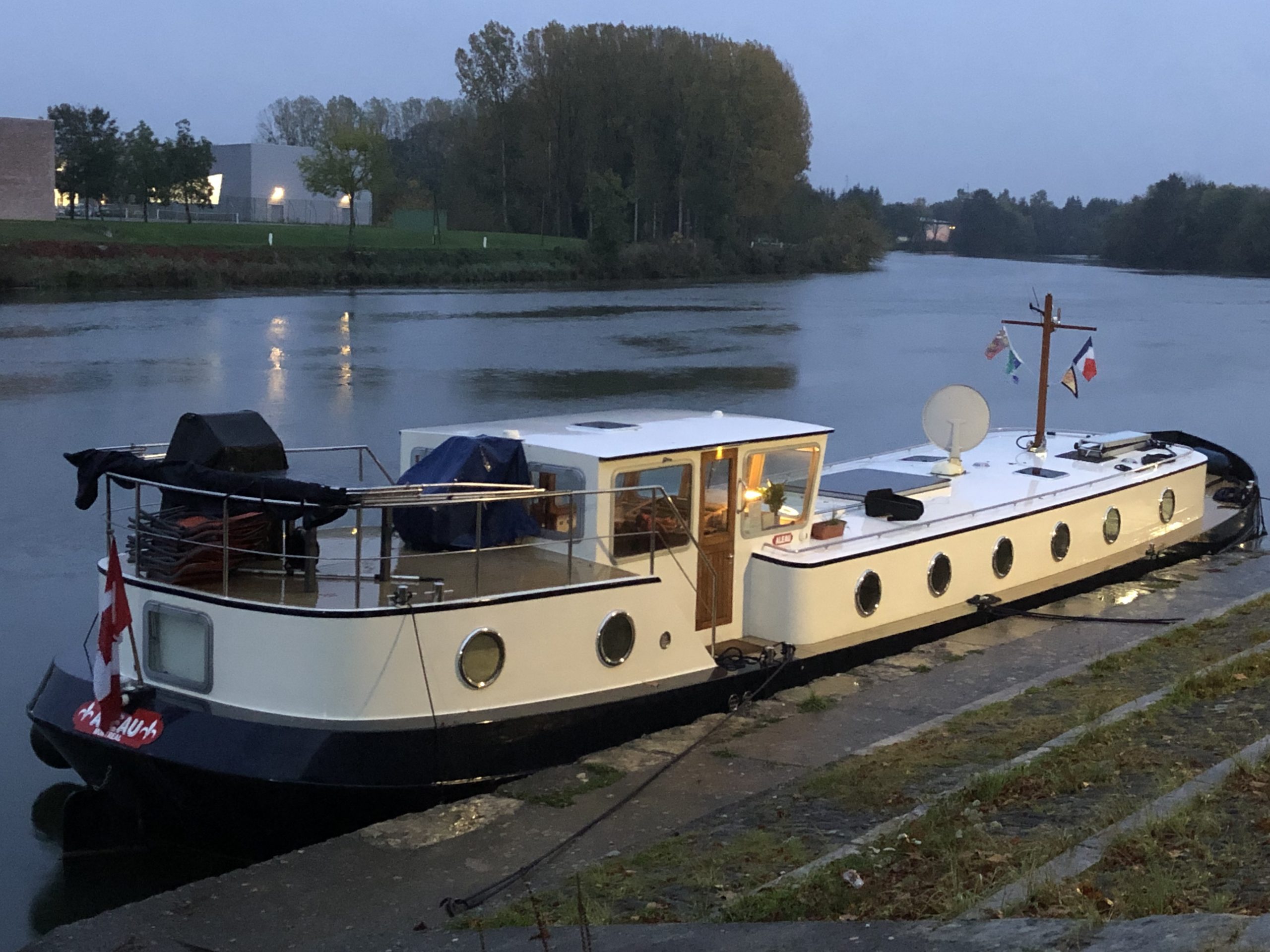The town of Maasbracht is, for the time being, our home and is home to about 6,000 other people. It is not to be confused with Maastricht, the much larger city 40 kilometres to the south. (See the latter part of Chapter 252.) The first written mention of Maasbracht dates back to 1265. How long before then it existed is anyone’s guess.
It is quintessentially Dutch. Where else but in the Netherlands would your bedroom window look out on a windmill?
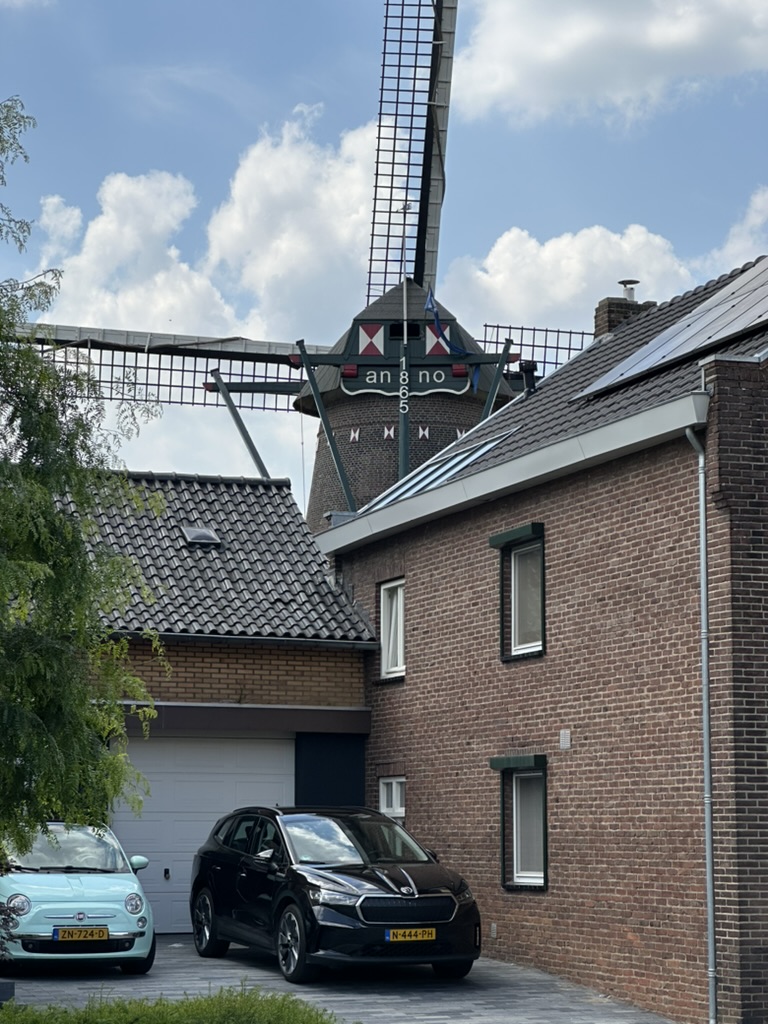
As is the norm in the Netherlands, bicycles are ubiquitous – and almost all riders seem to prefer pedal power over an electric motor. And absolutely no one wears a helmet.
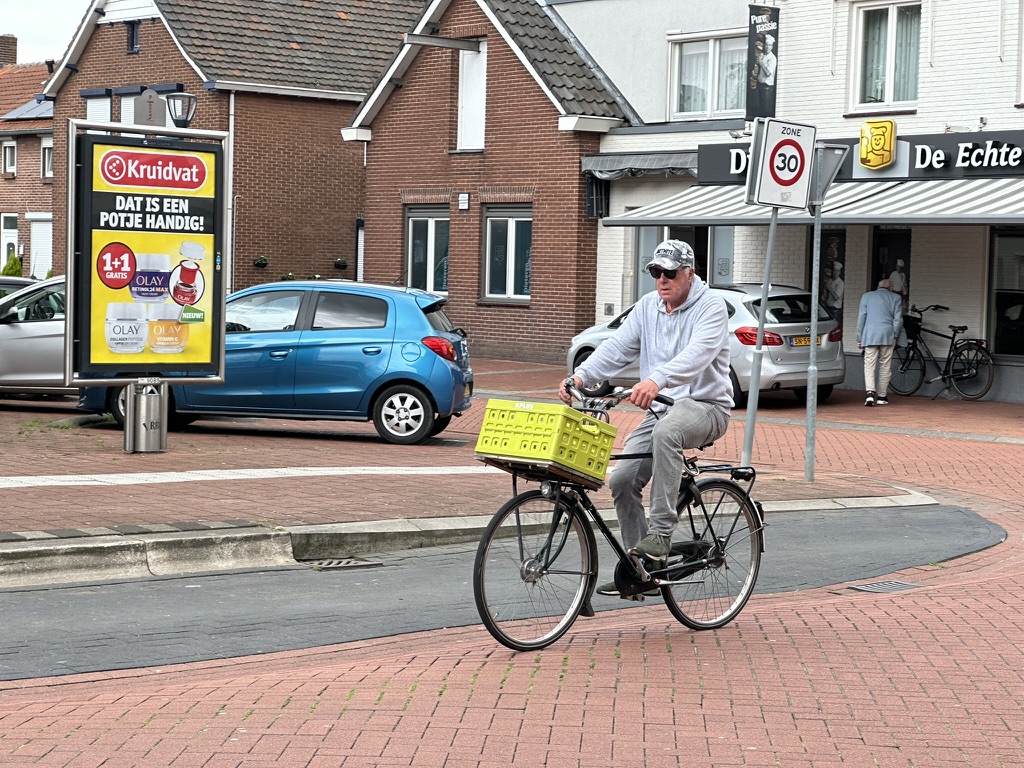
Maasbracht is the most immaculate town I have ever seen. It is spotless. There is no graffiti. There is no litter. There is not a pothole or a crack in the road. It is also the most well-mannered. We haven’t seen a police car the whole time we have been here.
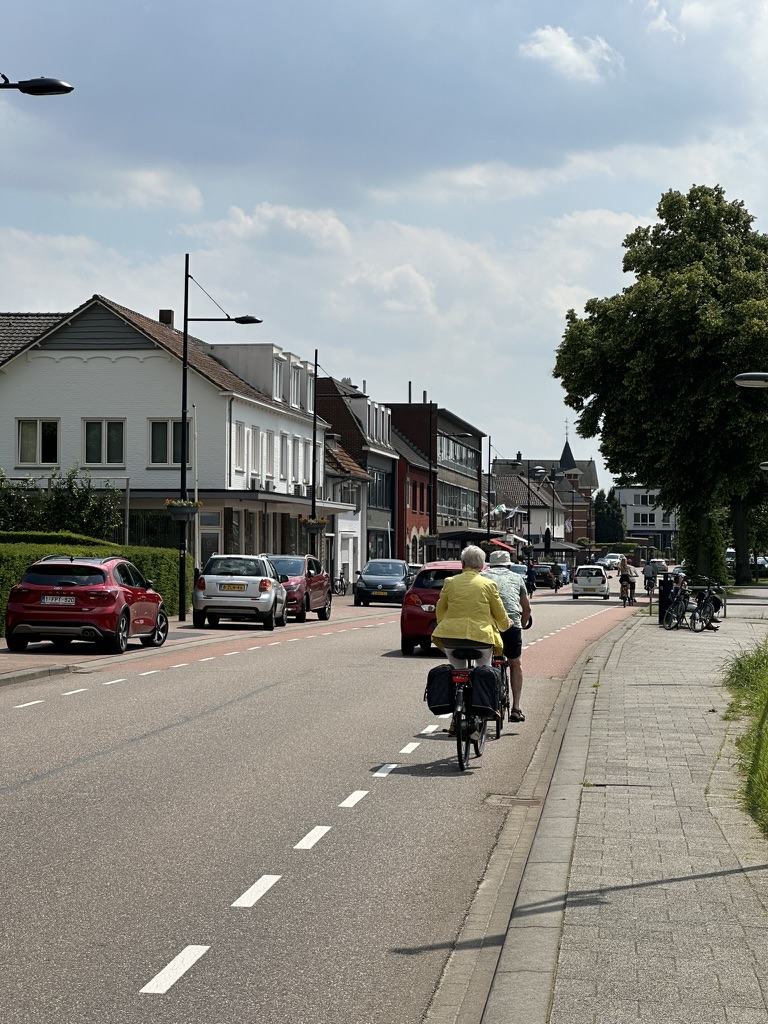
Along this street, there are restaurants on one side.
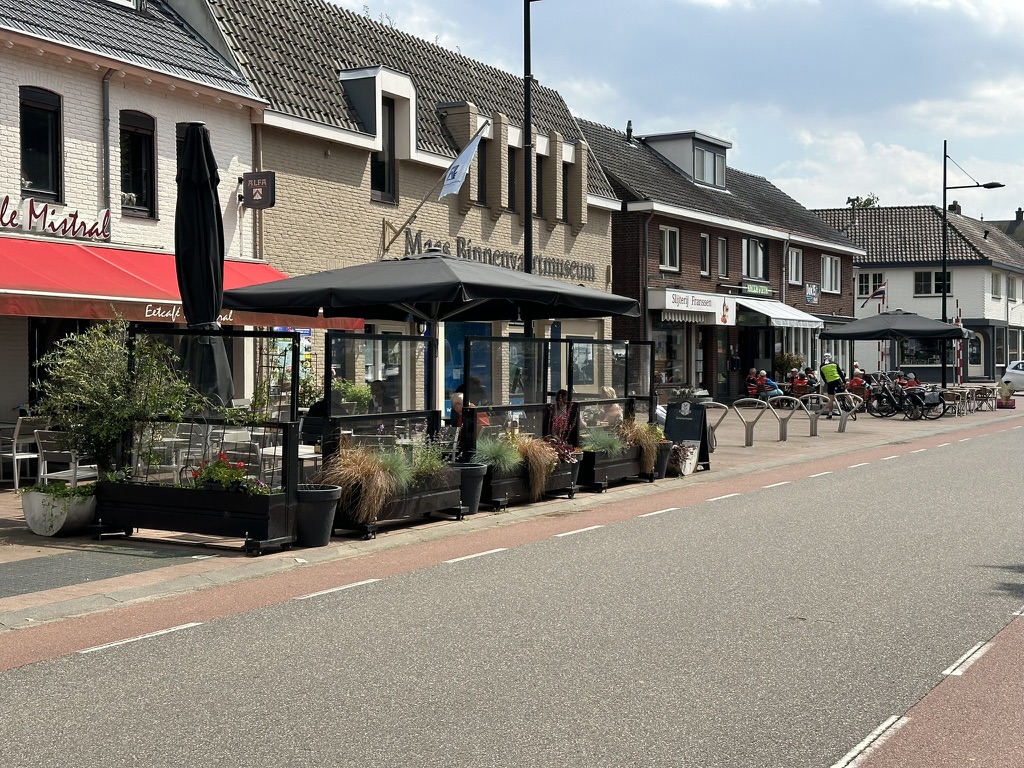
And a walkway along the waterfront on the other side.
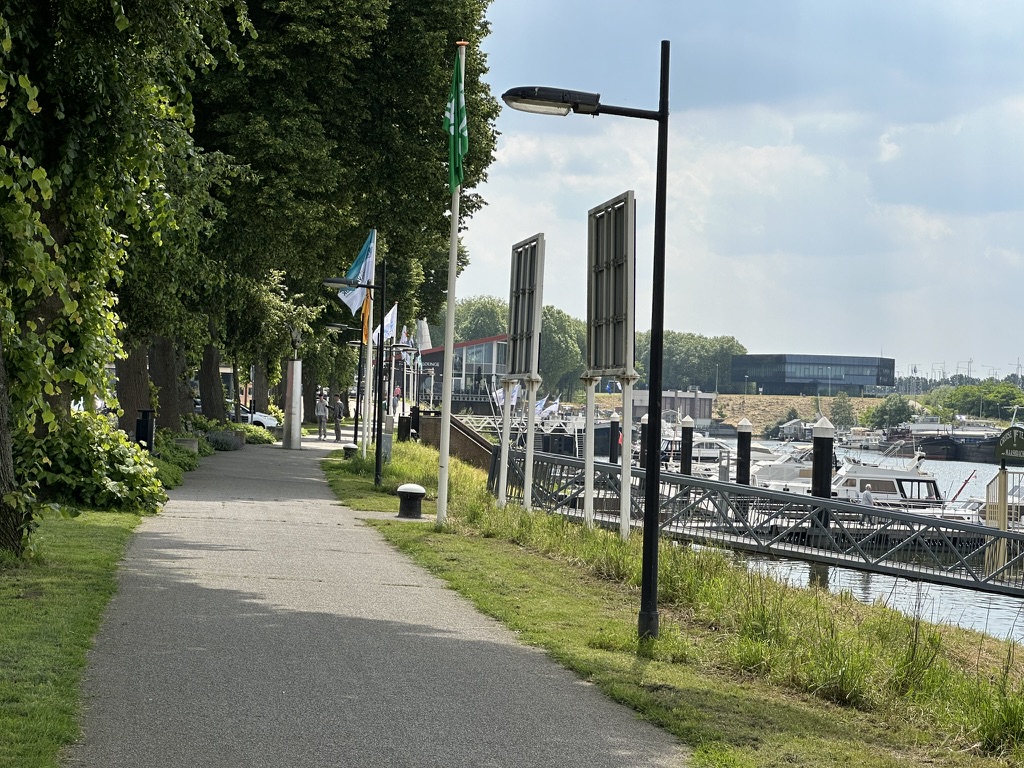
Near the end of the walkway, a restaurant that has become our favourite.
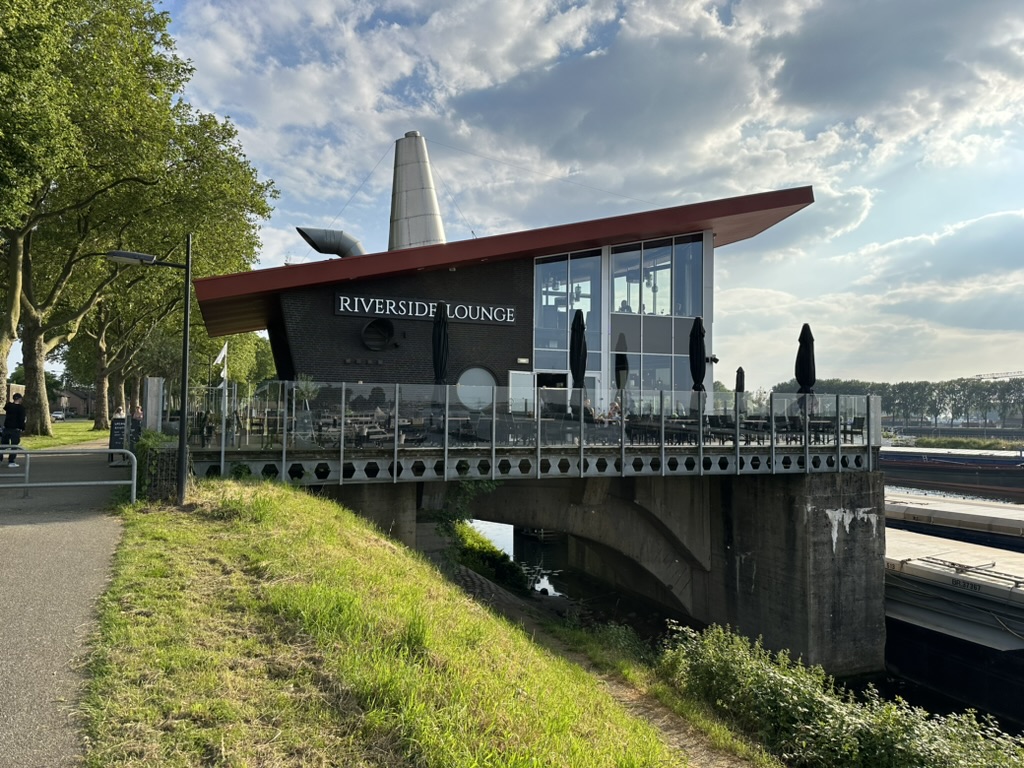
The view from it is dominated by barges.

Jeannie and I have eaten there alone.

And with fellow boaters. Here, we are joined by Pete and Tess from La Belle Hèlène and Wayne and Liz from Anahita. La Belle Hèlène was moored with us in Paris over the winter of 2022-23 and Anahita was in the same spot for the winter of 2023-24. And now, we’re all together in Maasbracht.
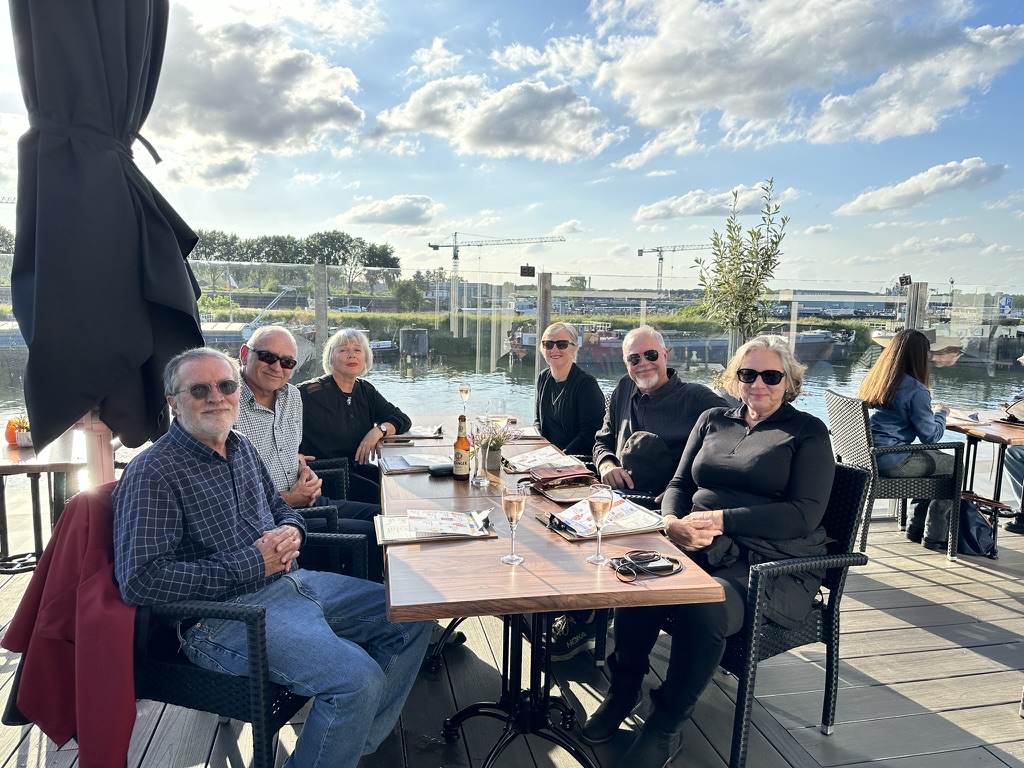
As an excuse to get away from the noise and dust of the shipyard, we have also gone back to the Riverside Lounge separately with our boating buddies. Here, during a rare bit of sunshine, we’re enjoying drinks with Wayne and Liz.
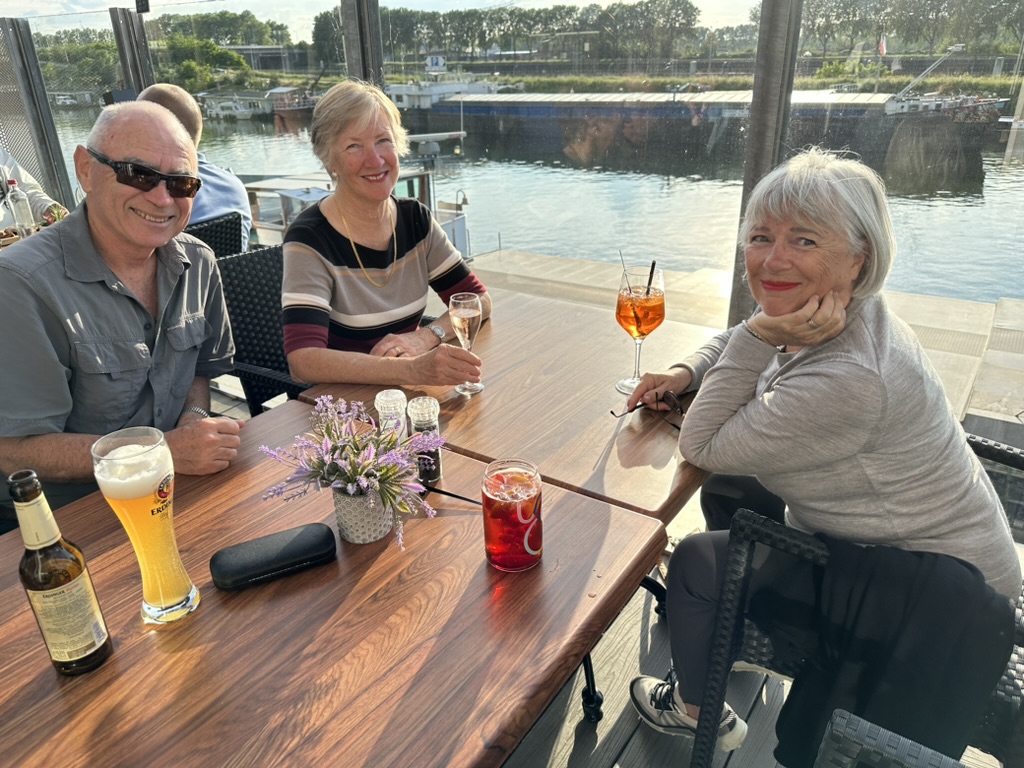
Don’t read too much into that sunny sky. It changes to pouring rain almost instantly. Multiple times a day.
I opted to have a massive burger and a fruit drink with absolutely no crap.
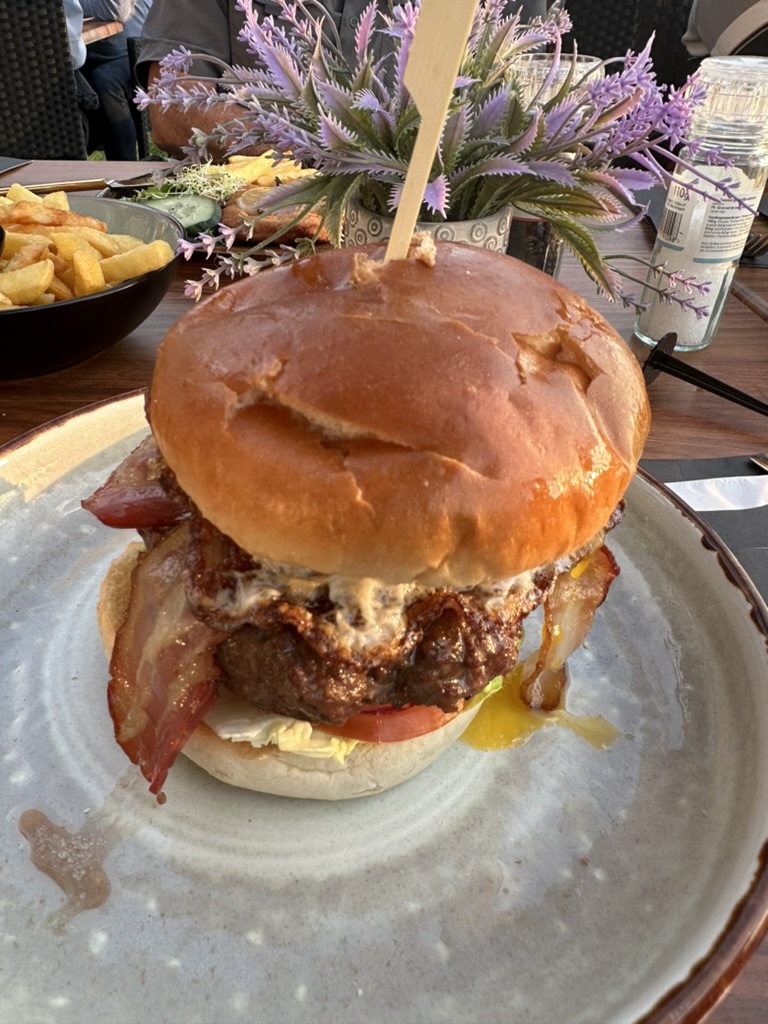
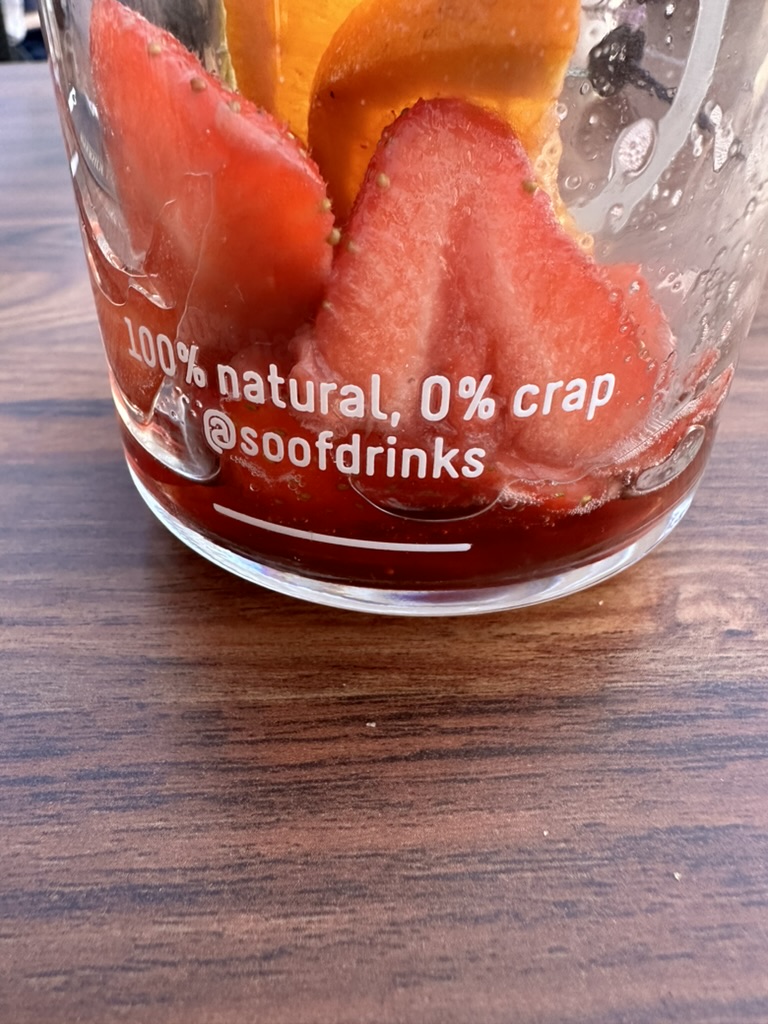
There are a number of restaurants to choose from in Maaasbracht. We’ve had dinner here – across the street from the Riverside Lounge.

But our culinary highlight was Da Vinci – a Michelin starred restaurant.
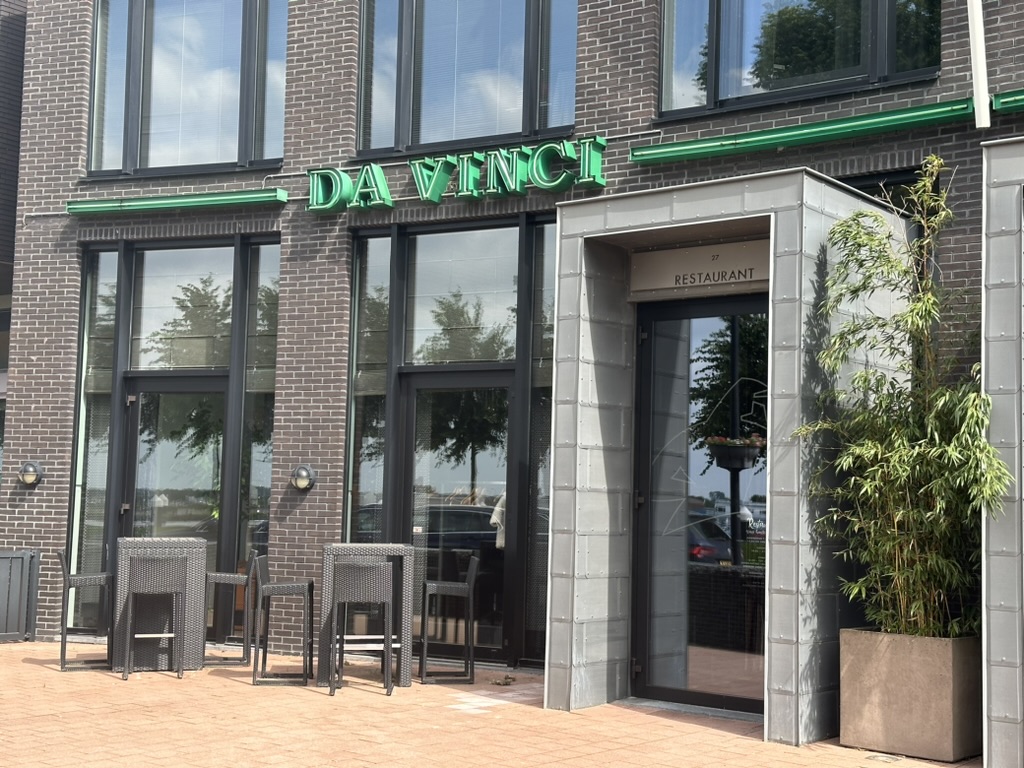
I took Jeannie there for her birthday. They brought out a plate to mark the occasion

The meal started with two amuses-bouche.

We had Champagne by the glass but passed on wine. Although we were tempted by a bottle that cost more than $10,000 Canadian.

After the first amuse-bouche, another one, a white-asparagus soup.

Jeannie used self-restraint and passed on an entrée. I went for lobster ringed with white asparagus.

A bit of trivia: In Holland, Hollandaise sauce is not called Hollandaise sauce, it’s called Asparagus sauce. In some restaurants, Da Vinci included, a full page of the menu is devoted to asparagus dishes.
Jeannie’s main course was lobster tempura on saffron-scented rice in a tomato broth.
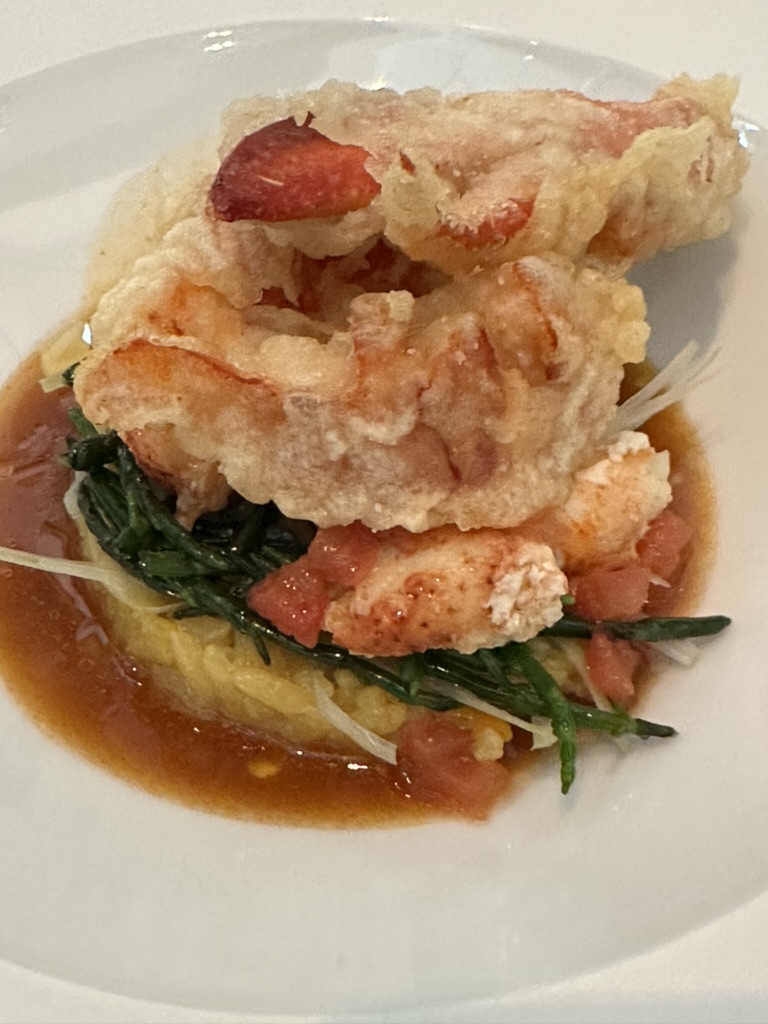
I had North Sea turbot, Limburg asparagus, saffron, and Hollandaise sauce, sorry, Asparagus sauce.
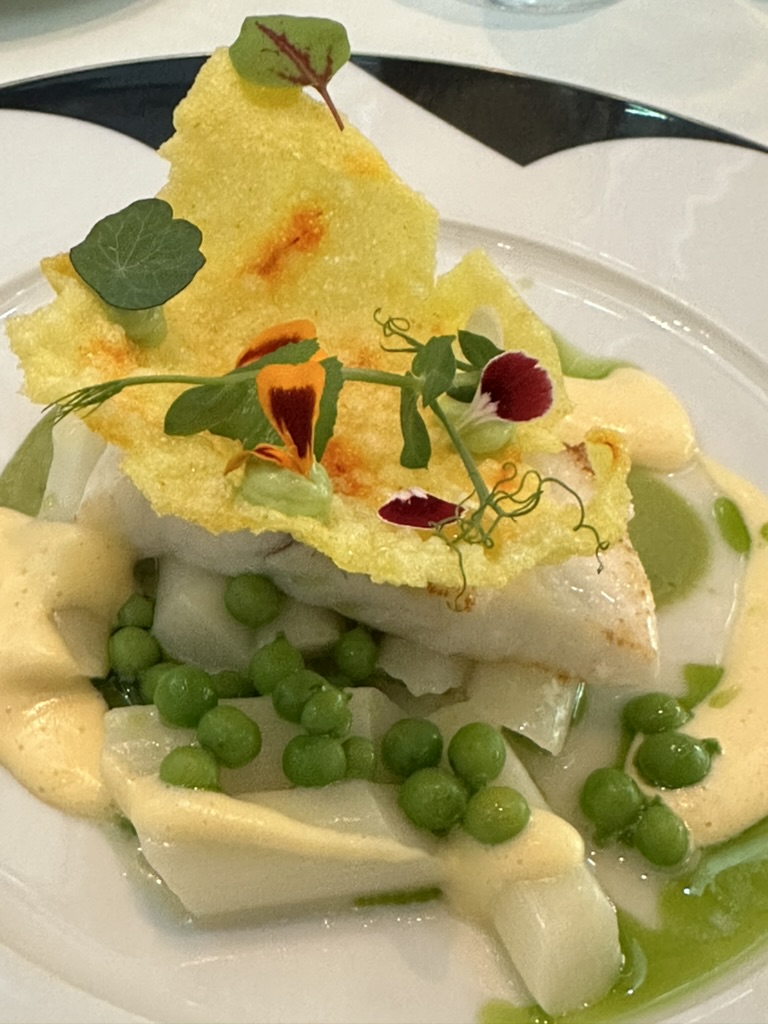
To munch on while eating our main course, we each were given a slice of toast.
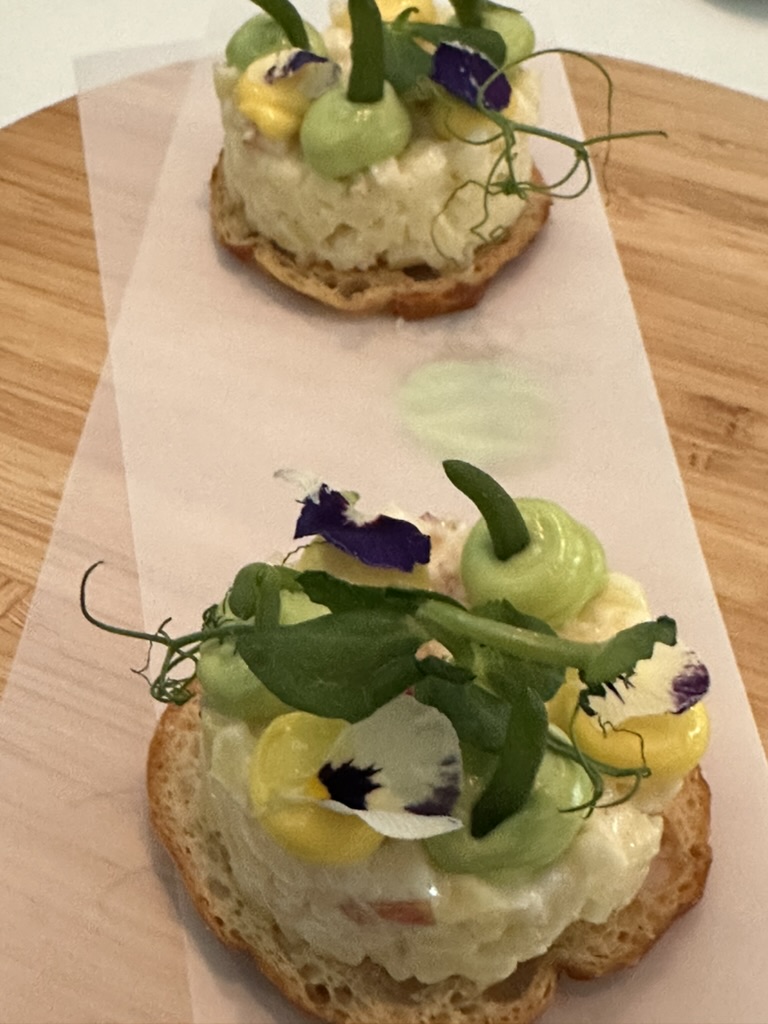
Jeannie’s dessert is the top photo – cheesecake, rhubarb, and basil – and in the bowl at the edge of the photo, strawberry sorbet with elderflower.
Dessert for me was a café gourmand.
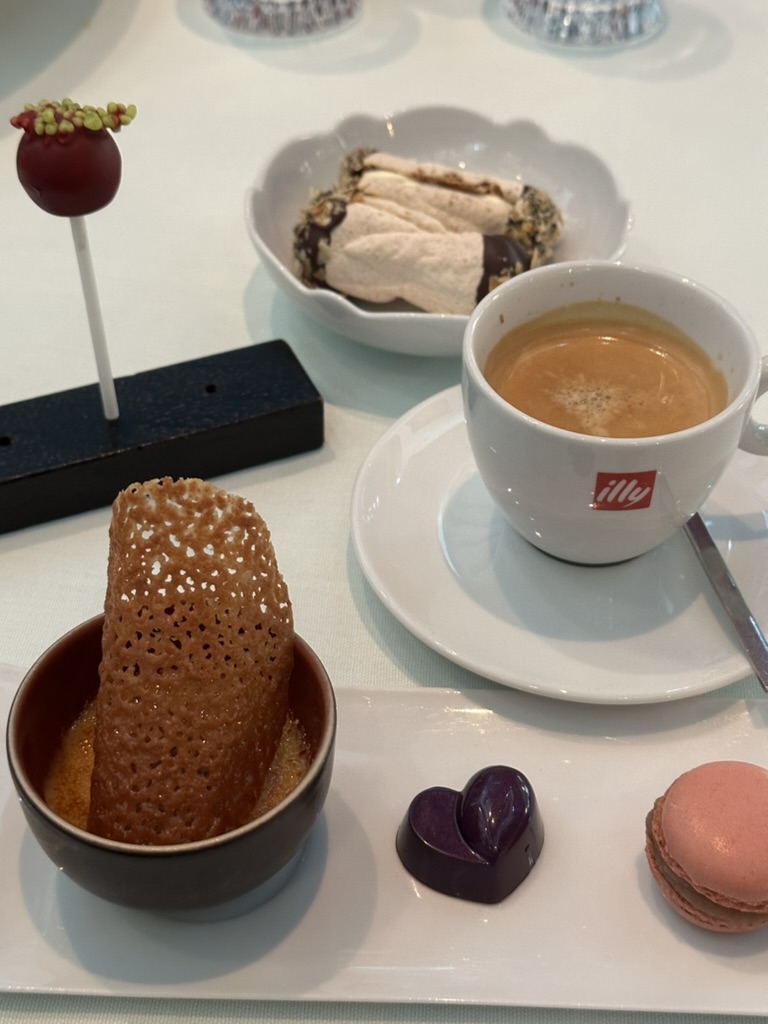
Da Vinci is on the street that borders the waterfront. The other main street in Maasbracht passes through the centre of town.
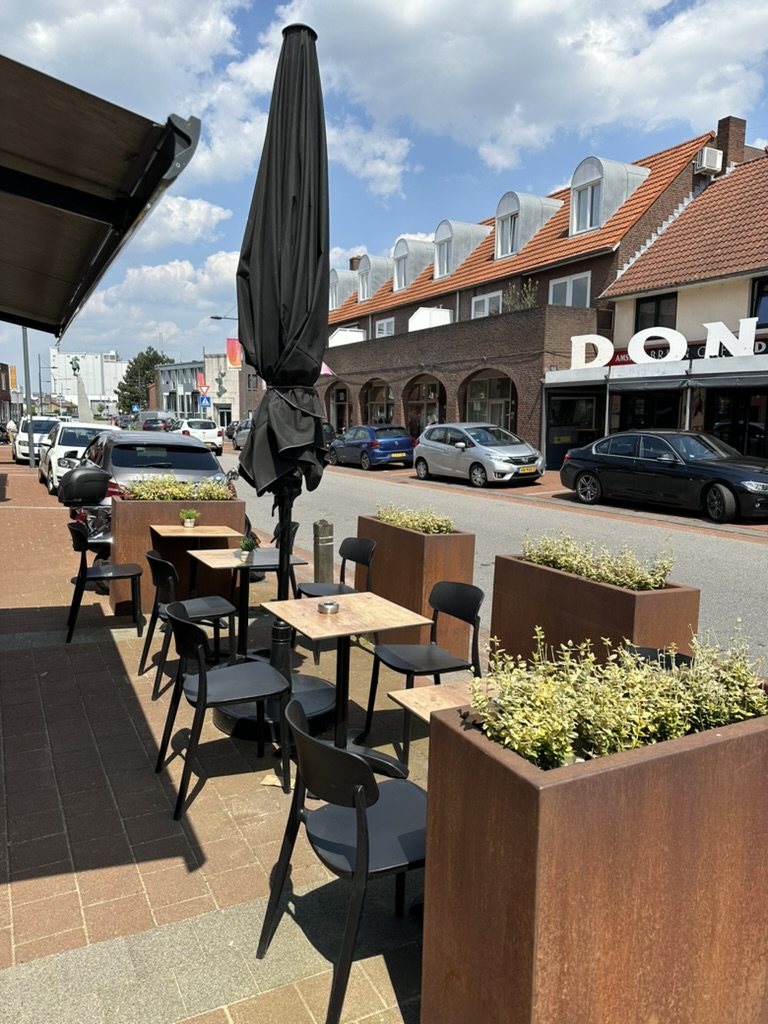
Maasbracht has one bakery.

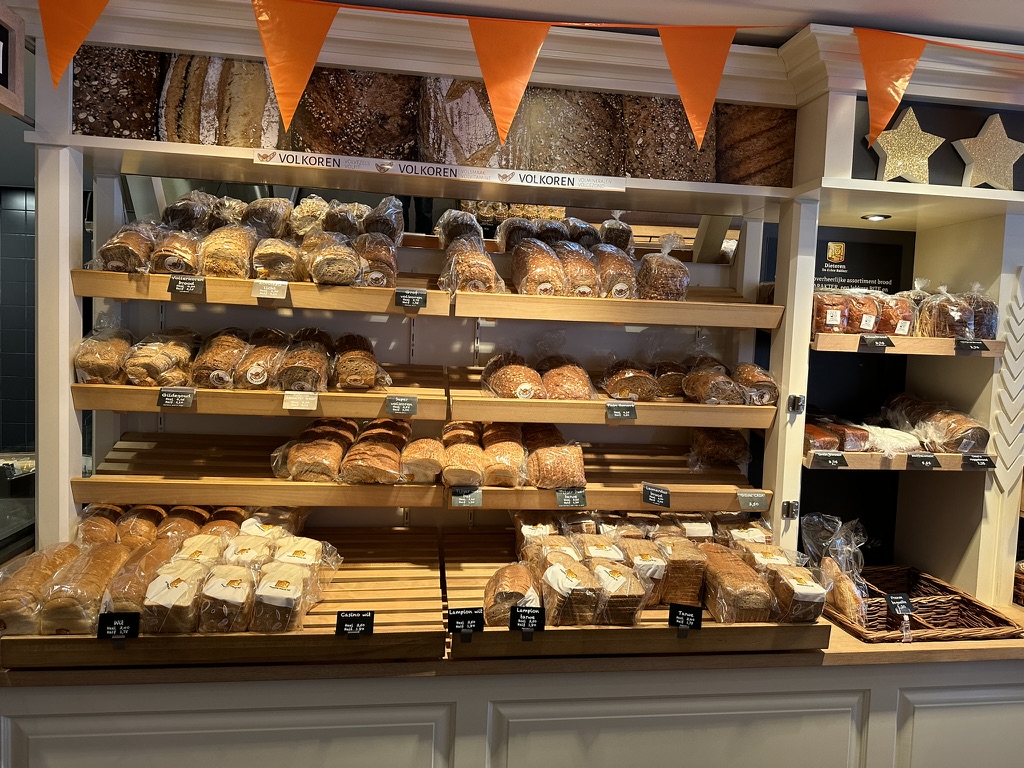

And one butcher.
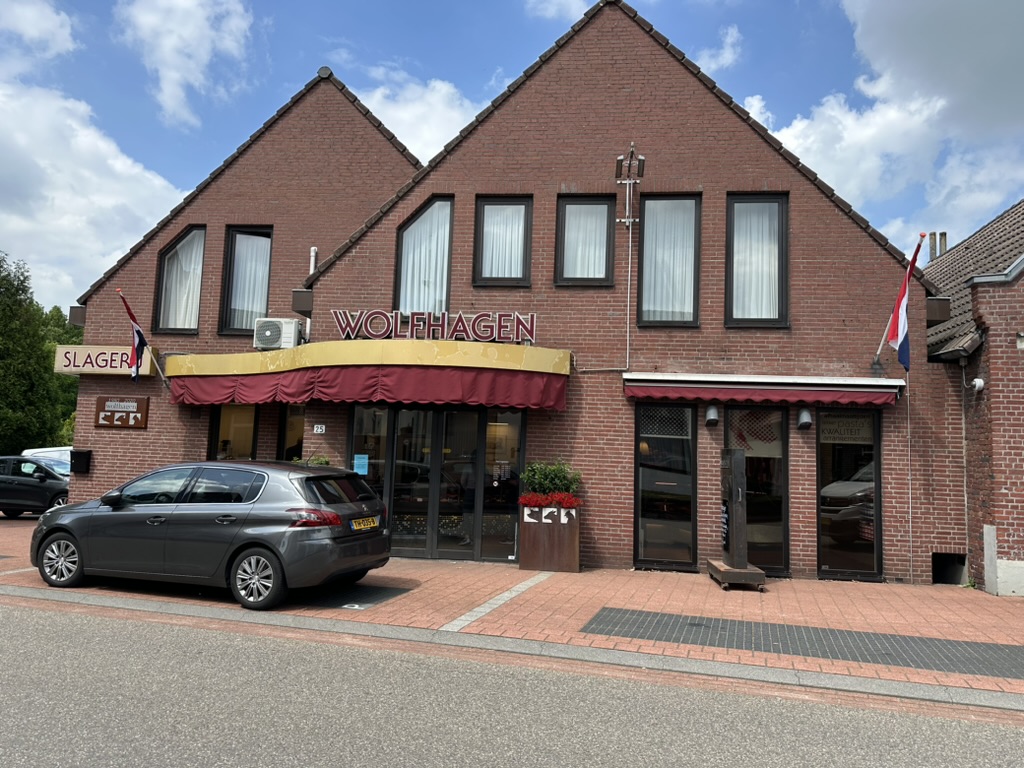
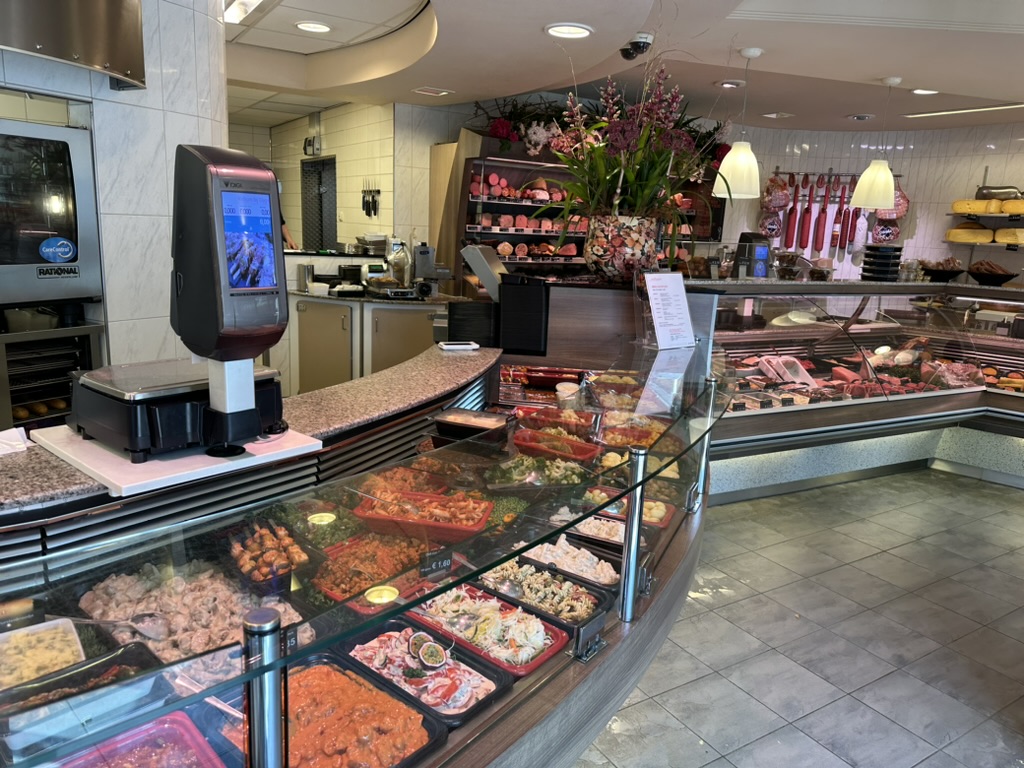
There are two supermarkets. Both have ATMs right at the front door. That will be handy, we thought.
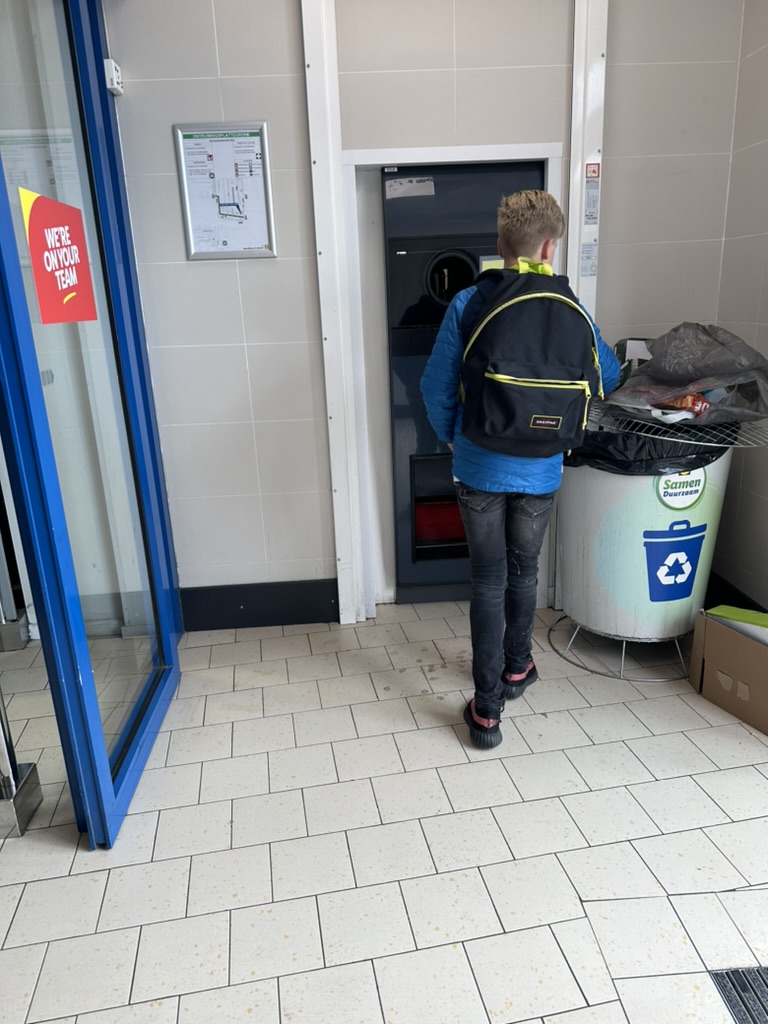
On closer inspection, we found they weren’t ATMs but bottle-recycling machines. That will be handy, we thought. Until we inserted our bottles. The machine spat every one of them back at us. Wine bottles. Coke bottles. Olive oil bottles. No. No. No. If we hadn’t bought them there, we couldn’t return them there. Fortunately, I found a more receptive receptacle nearby.
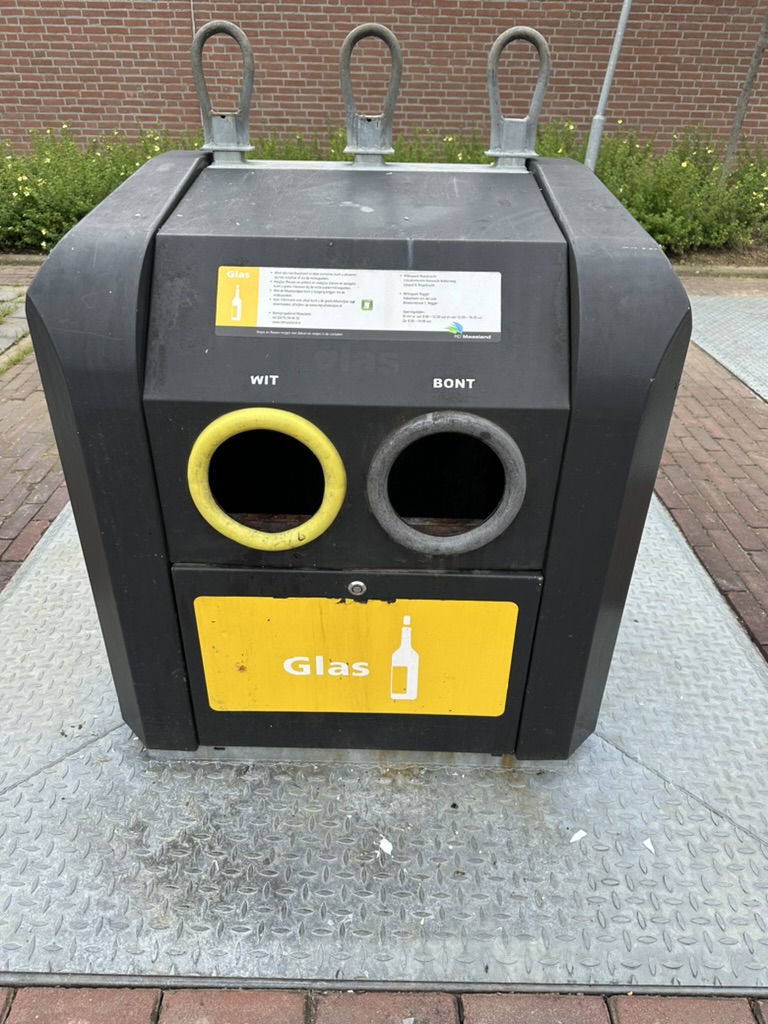
Next to it was a garbage bin. But one had to pay to use it. For a town so spotless, I thought this was a bit strange. Google Translate says Restafval means ‘residual waste.’ I’m not sure what kind of trash that is.
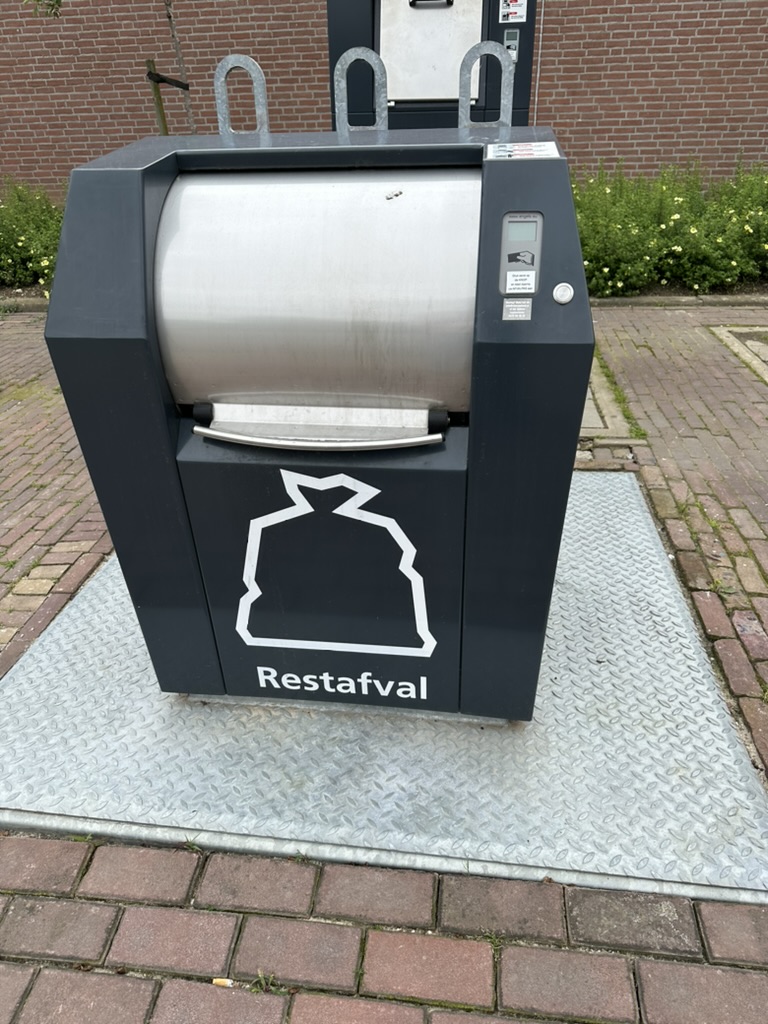
After getting rid of our bottles, I found another ATM.
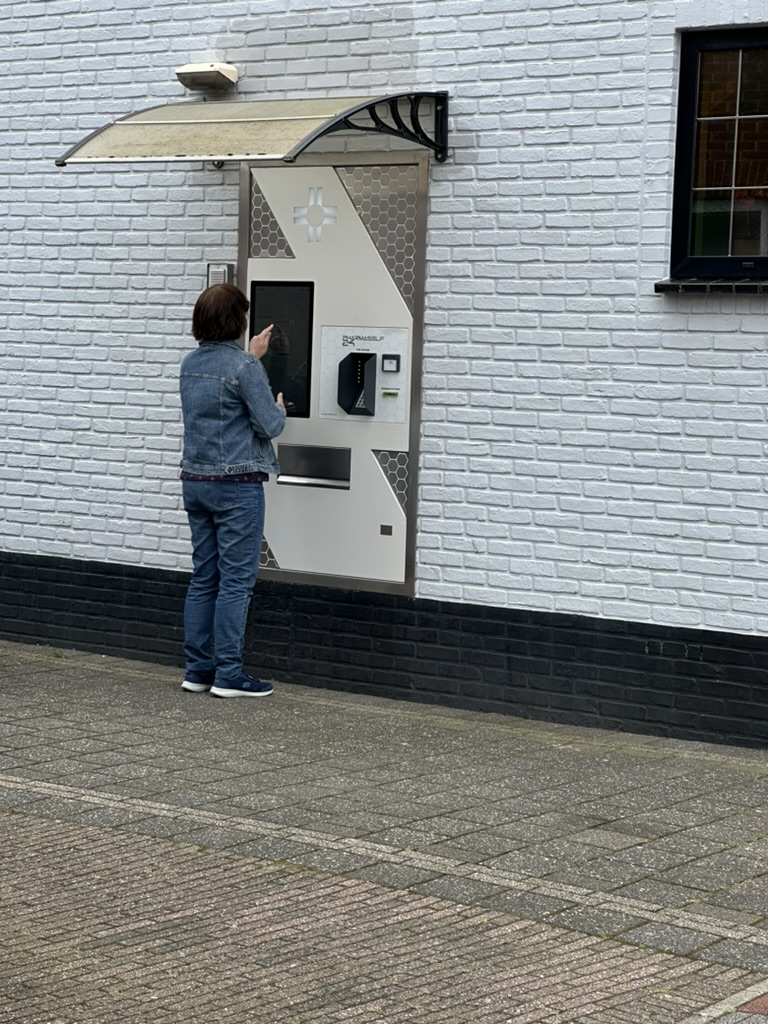
Foiled again. This one was attached to a pharmacy and dispensed drugs. I assume a prescription was necessary and the order had already been placed. No cash for us at this machine.
Finally, something we could understand – a once-a-week public market.
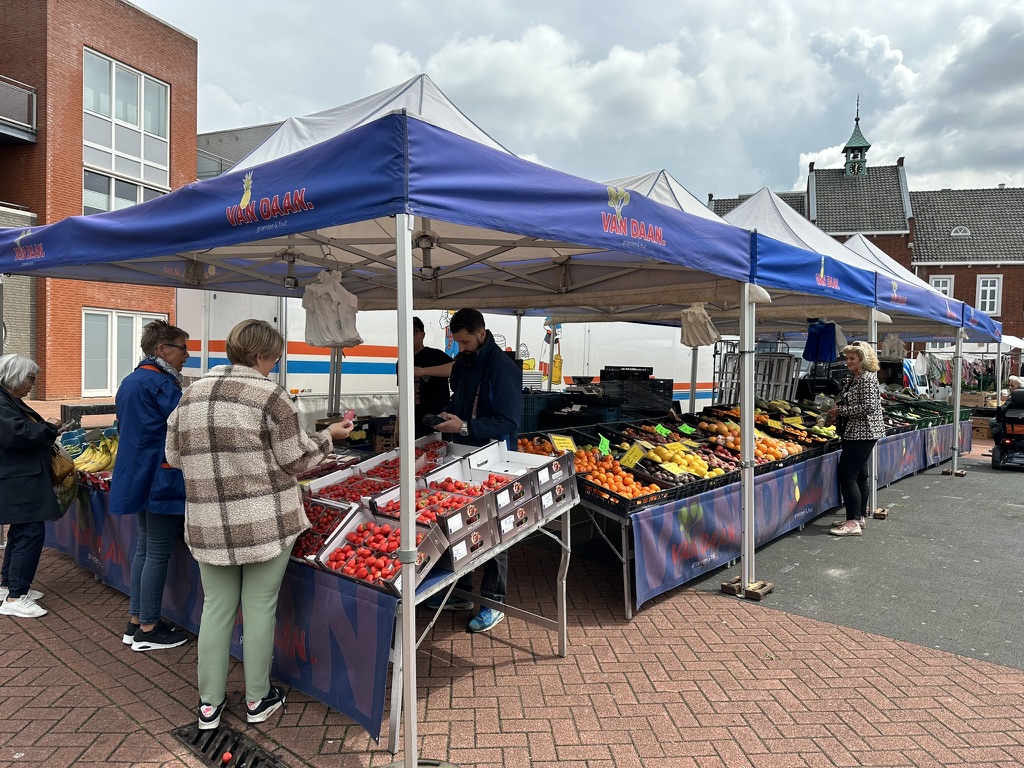
No surprise. Cheese and fish were the big sellers. We’re in the Netherlands.
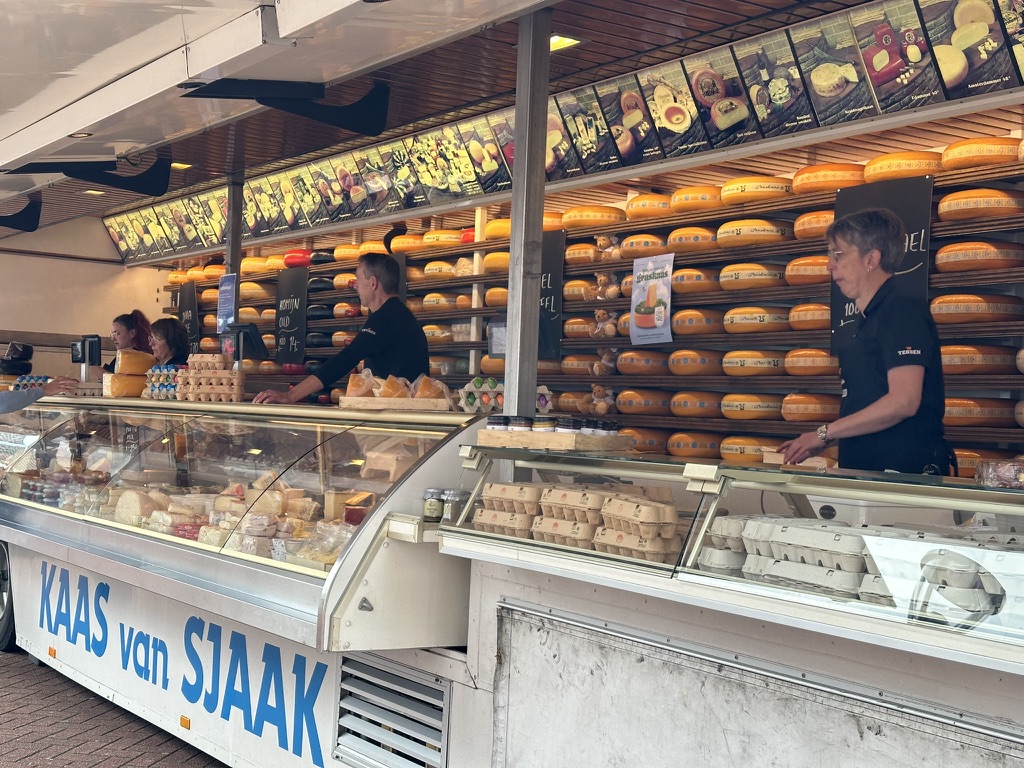

Back on the street, just how immaculate Maasbracht is continued to impress me.
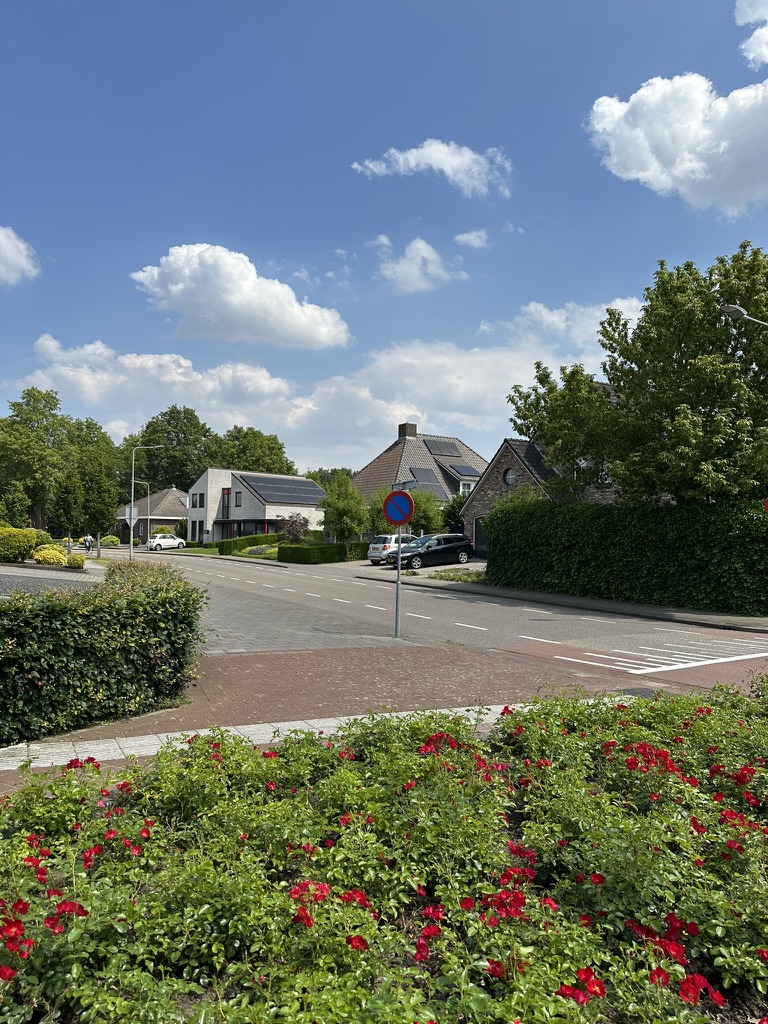
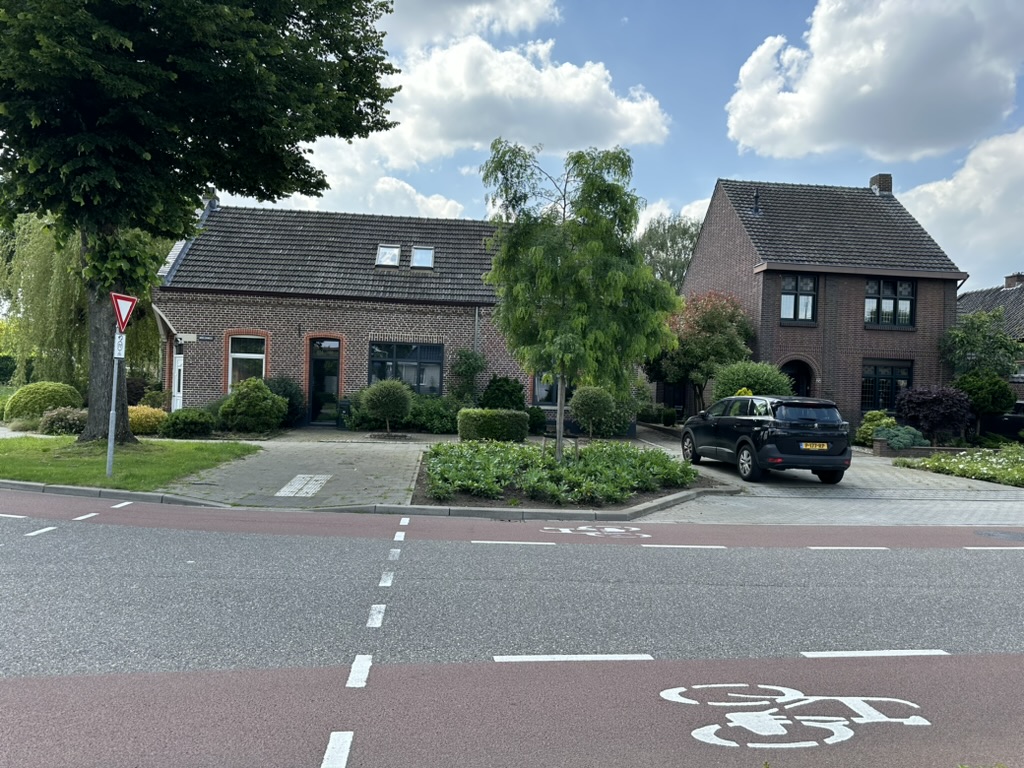
Where you could park – and couldn’t – were clearly marked.
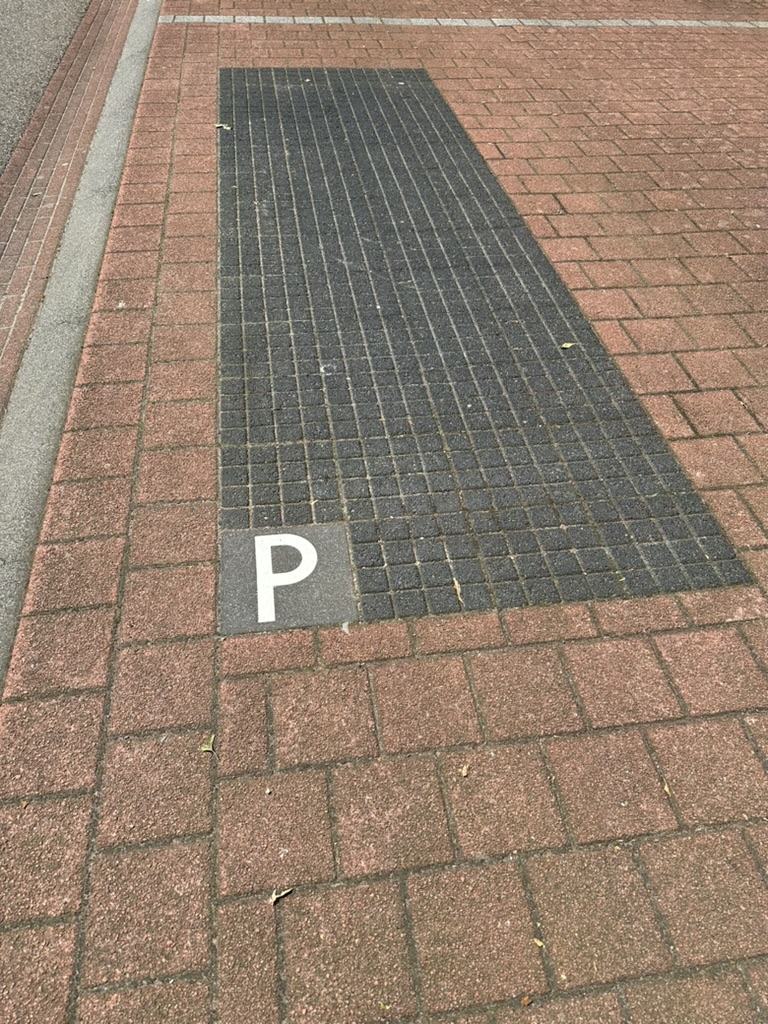
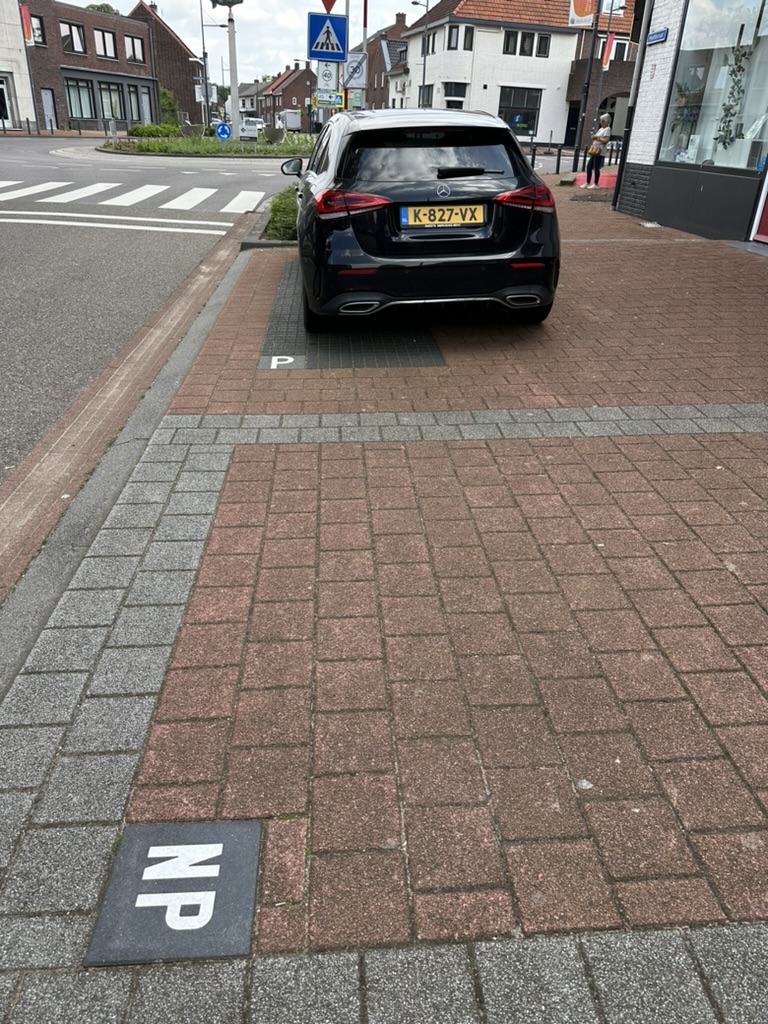
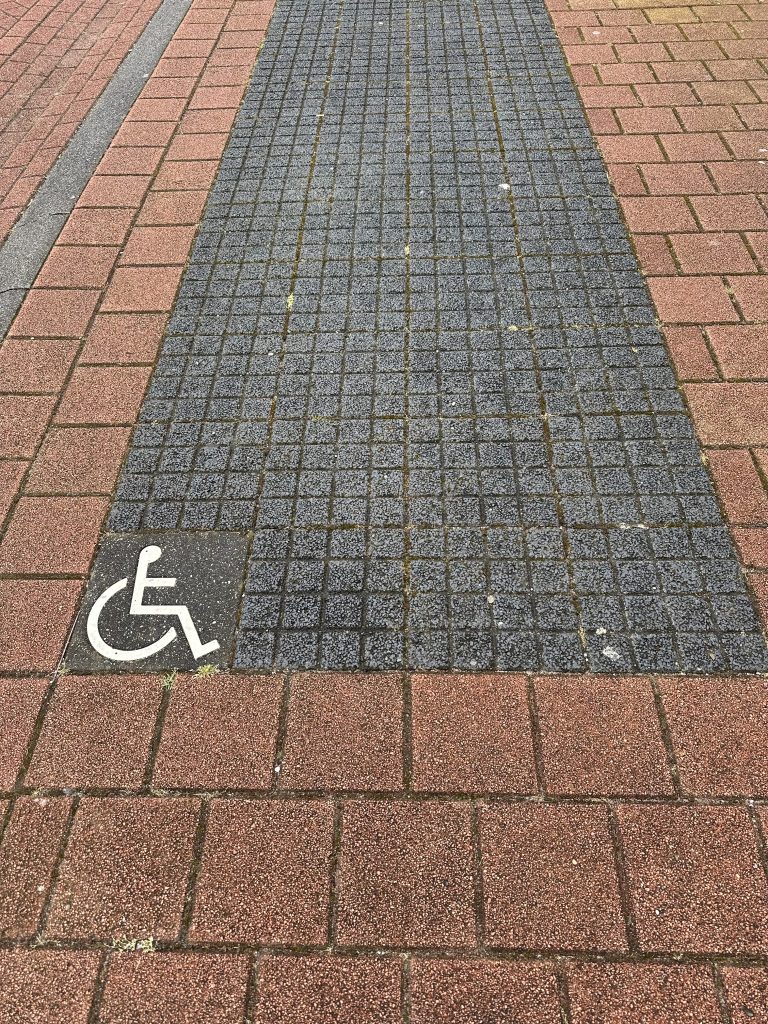
On one of our evening walks for dinner at the Riverside Lounge, another beautification project was underway. The grass all along the waterfront was being mown – by sheep.
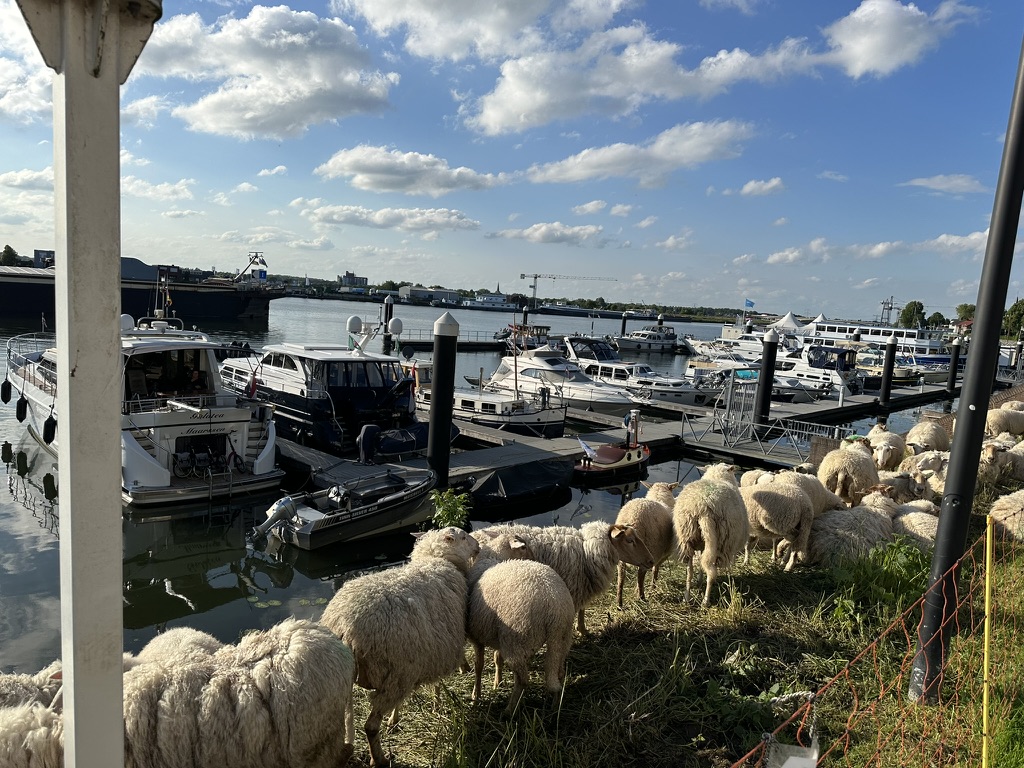

Of course, there’s a black sheep in almost every family.

Each day, the sheep were given a new patch of grass to take care of. Any souvenirs they had left behind were quickly picked up and disposed of.
Maasbracht is the largest inland port in the Netherlands – making it not only the barging capital of the Netherlands but of all of Europe.


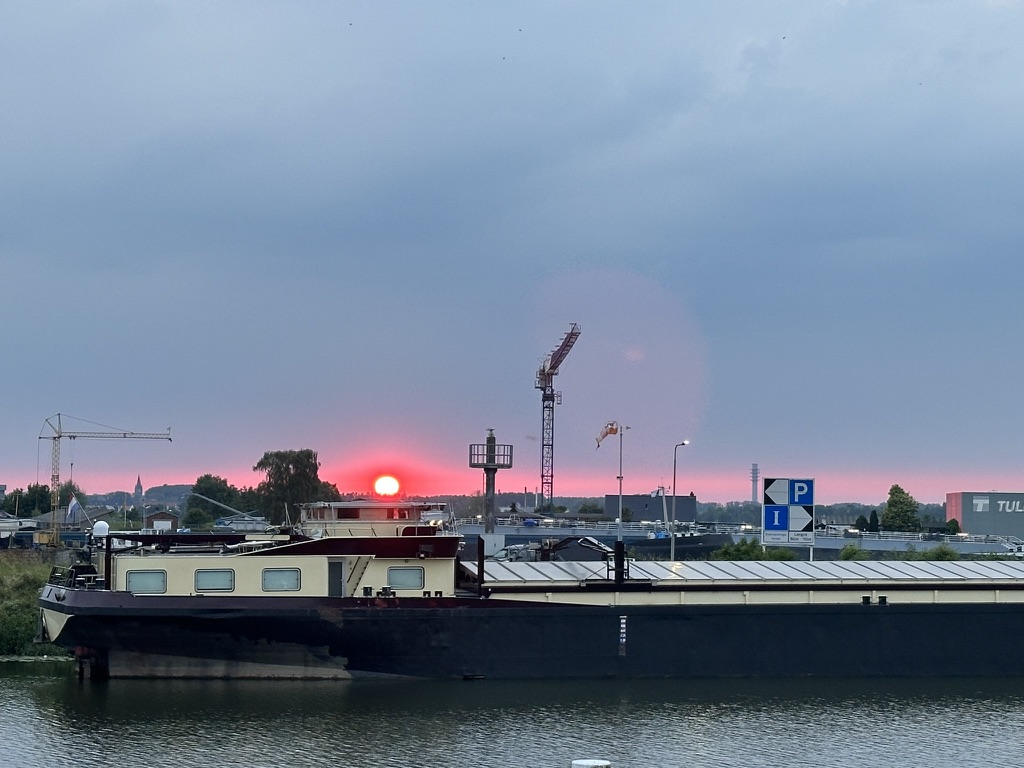
While barges dominate every view, yachts are welcome, too. In fact, they outnumber barges in the Maasbracht marina. That’s Pete and Tess’ barge La Belle Hèlène in the foreground with Wayne and Liz’s yacht, Anahita, behind and to the right.
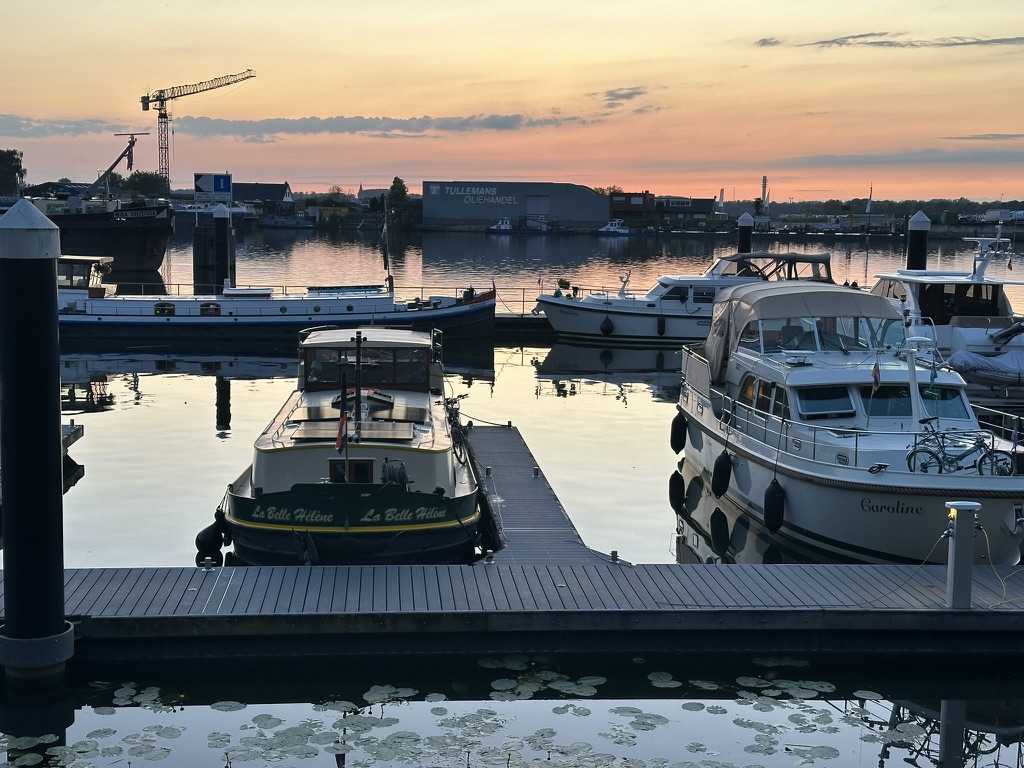
To handle the needs of all those boaters, Maasbracht has three chandleries. Two of them carry what you’d expect.


The third is a real dump.
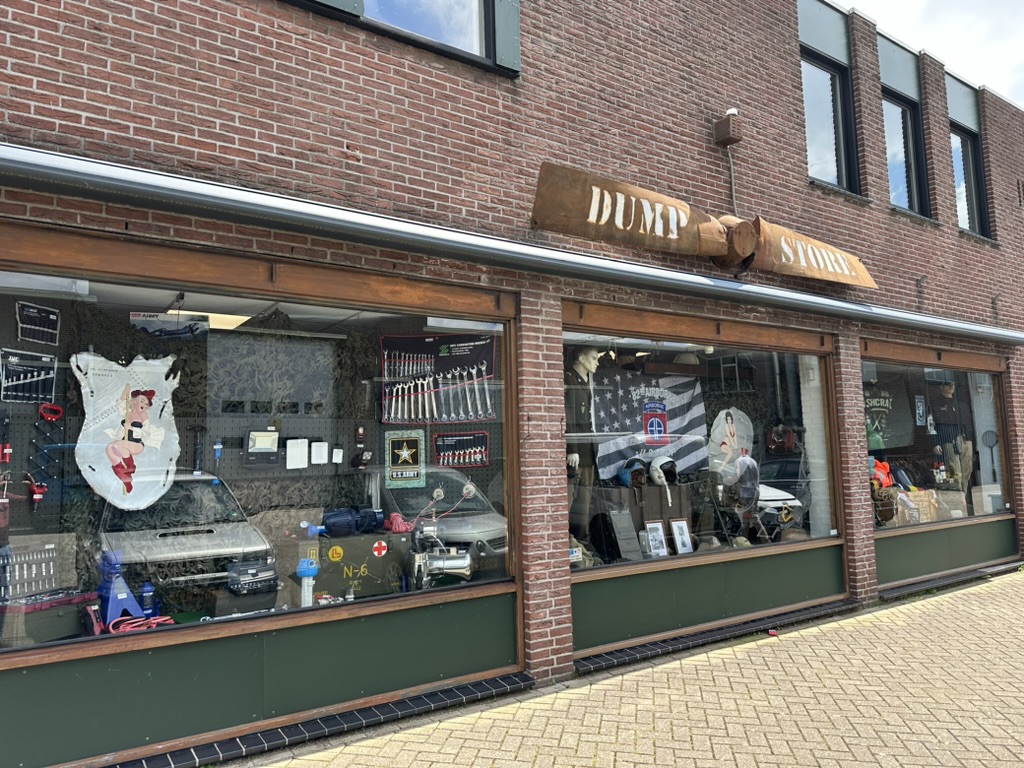
The Dump Store has a lot of items the other chandleries don’t carry. I suppose with a wing and a prayer you could have this one flying again.
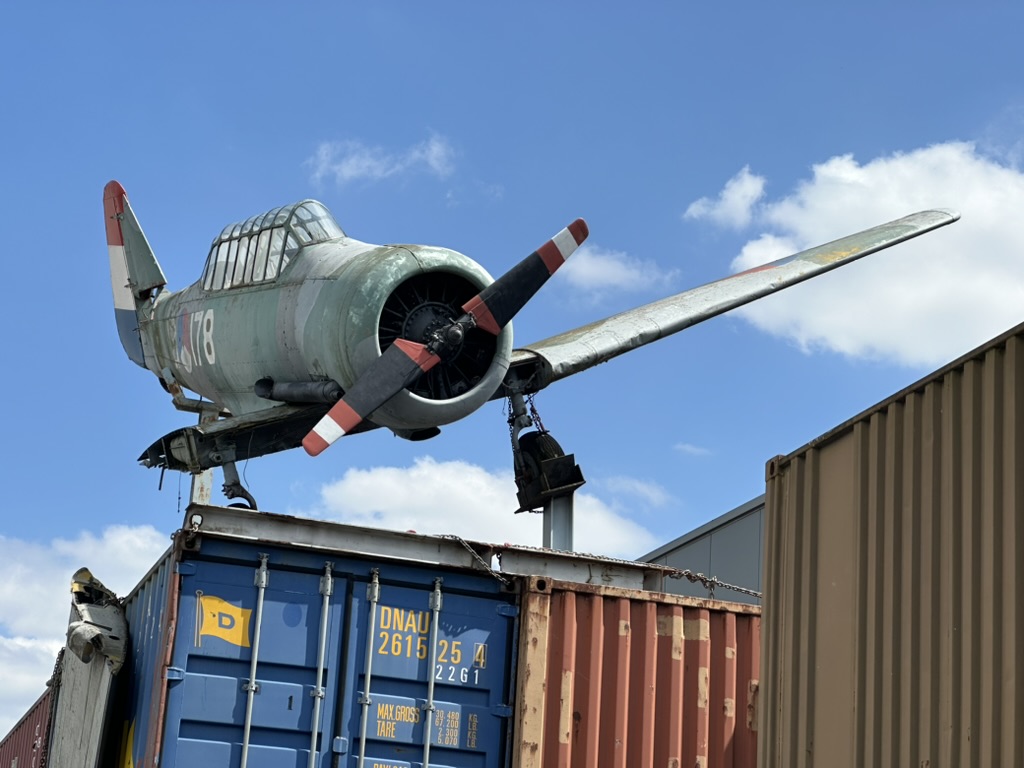
I’m not sure a Second World War barrier to keep tanks off your lawn would be necessary on a boat.

Nor an anti-aircraft searchlight.

The inside of the store was just as eclectic.

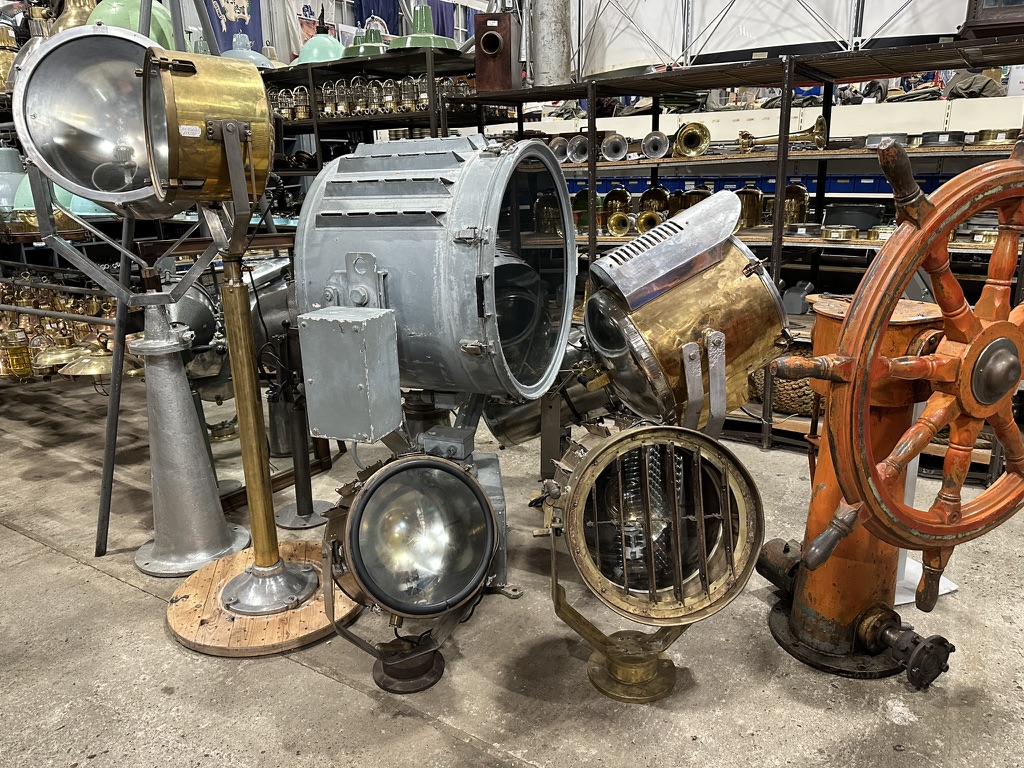
Although it did stock a few items we needed. And bought. In fact, I’ve been back a few times to pick up some necessities. It’s only a block from Tinnemans.
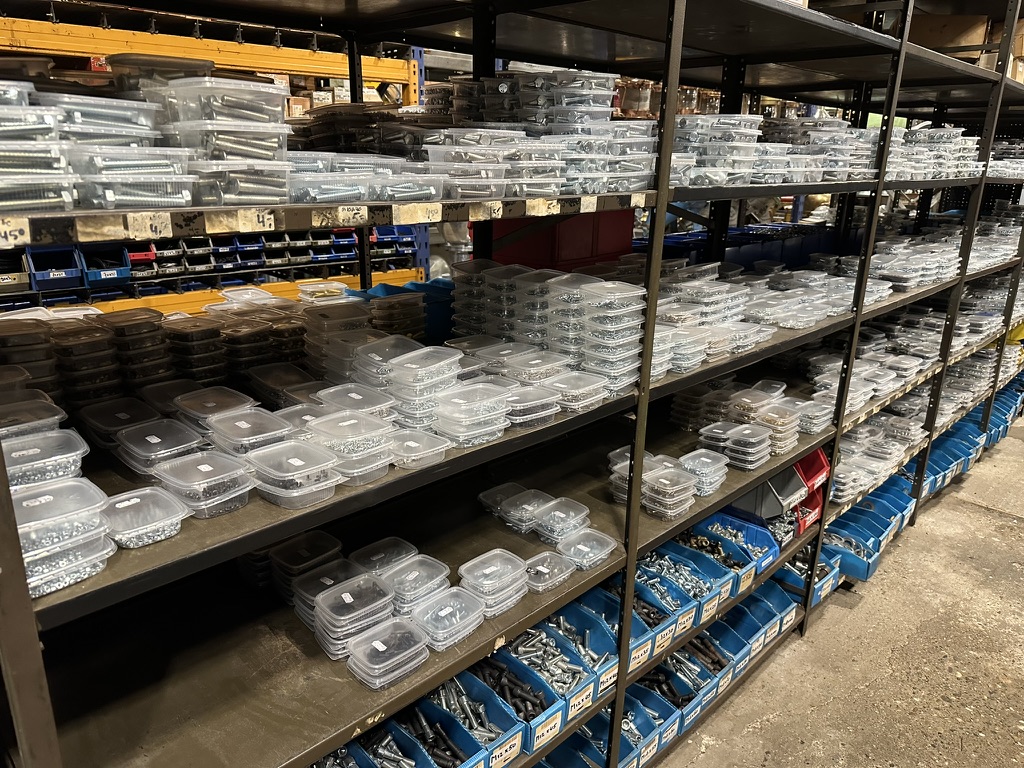
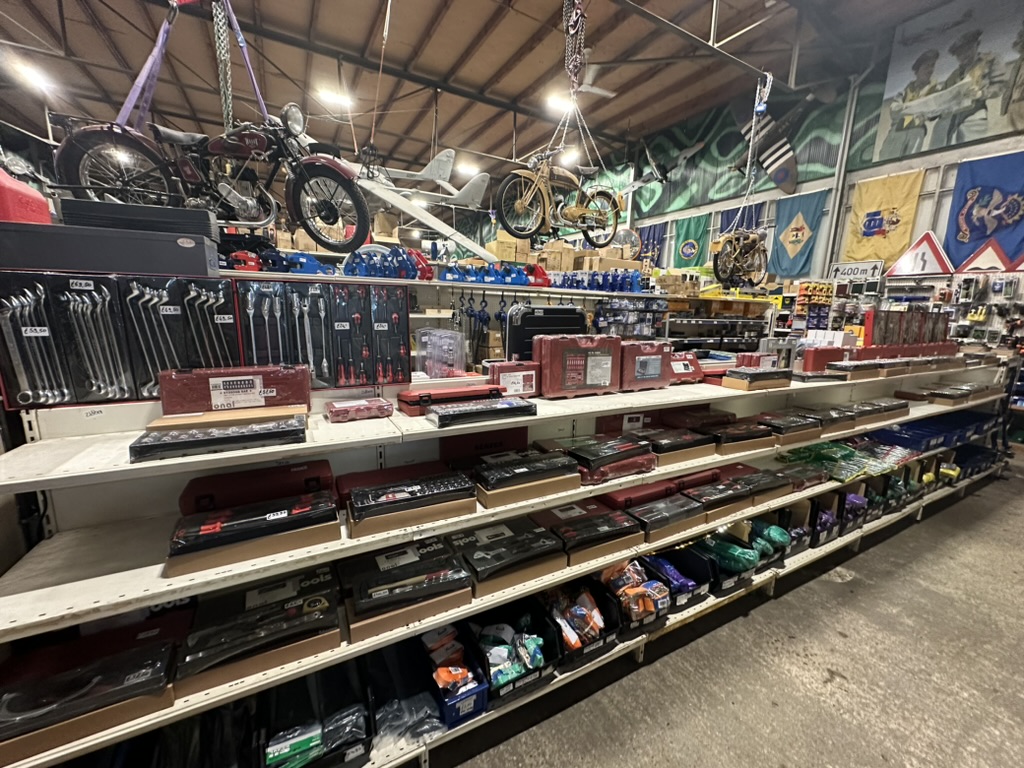
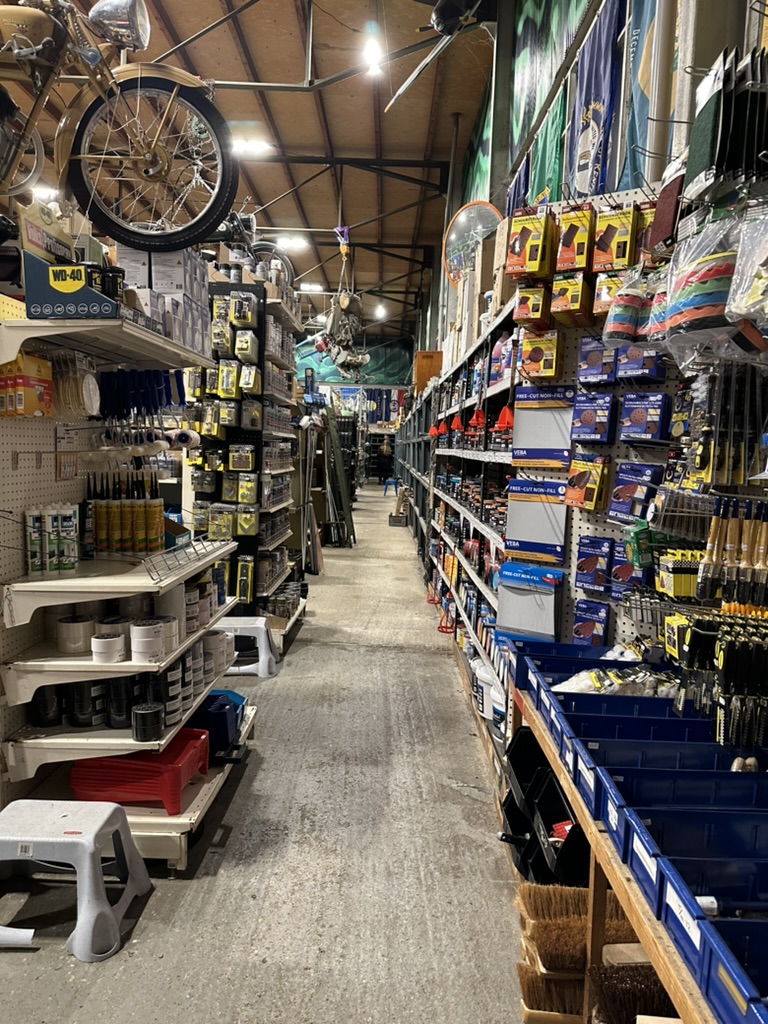
Maasbracht’s Catholic church is an interesting contrast. First built in the 14th century, it was destroyed in the Second World War and rebuilt in 1948. Its clock is now illuminated with LEDs.
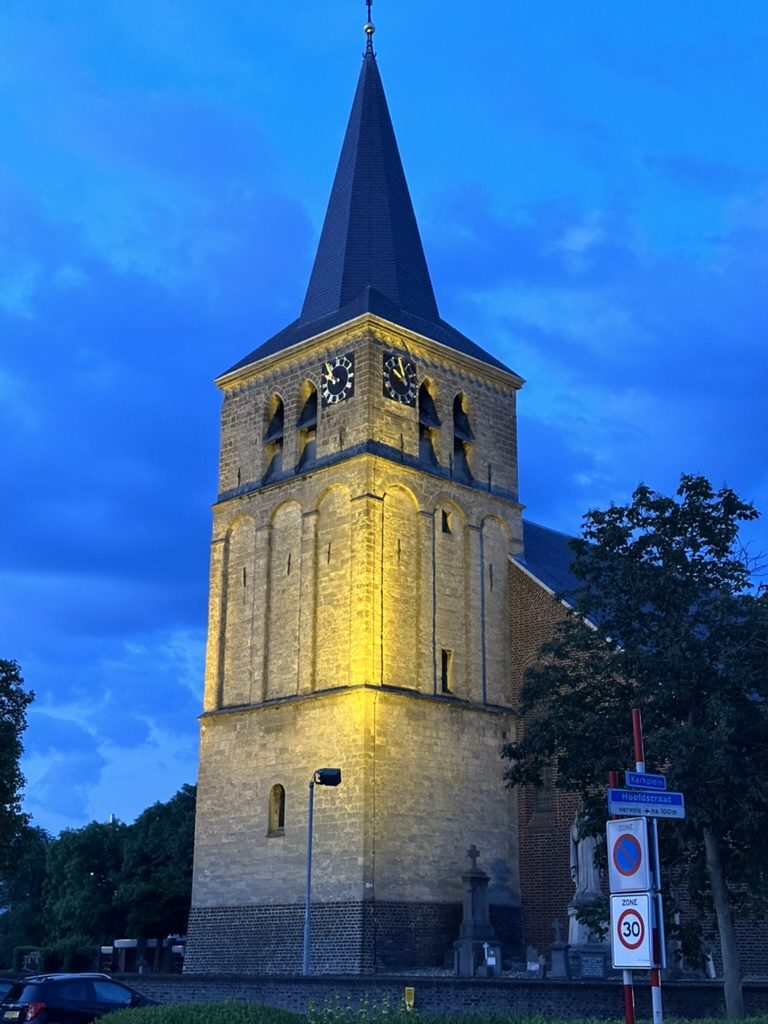
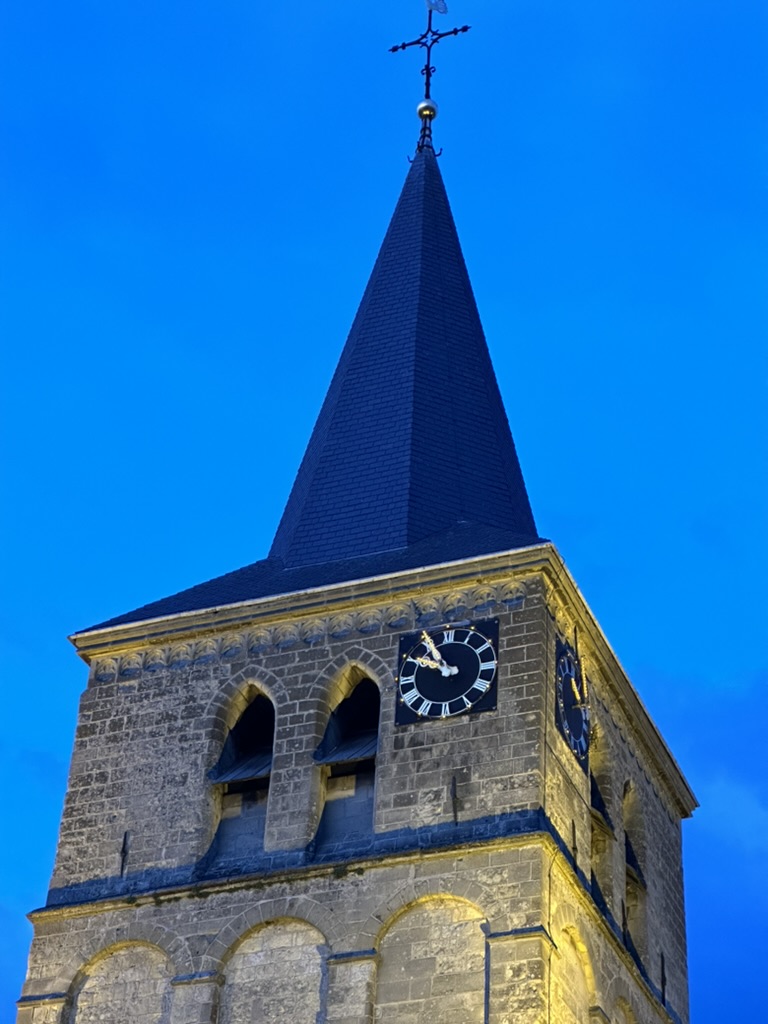
The church faces the waterfront. From it, it’s possible to see scores of barges and how much a part of Maasbracht they are.
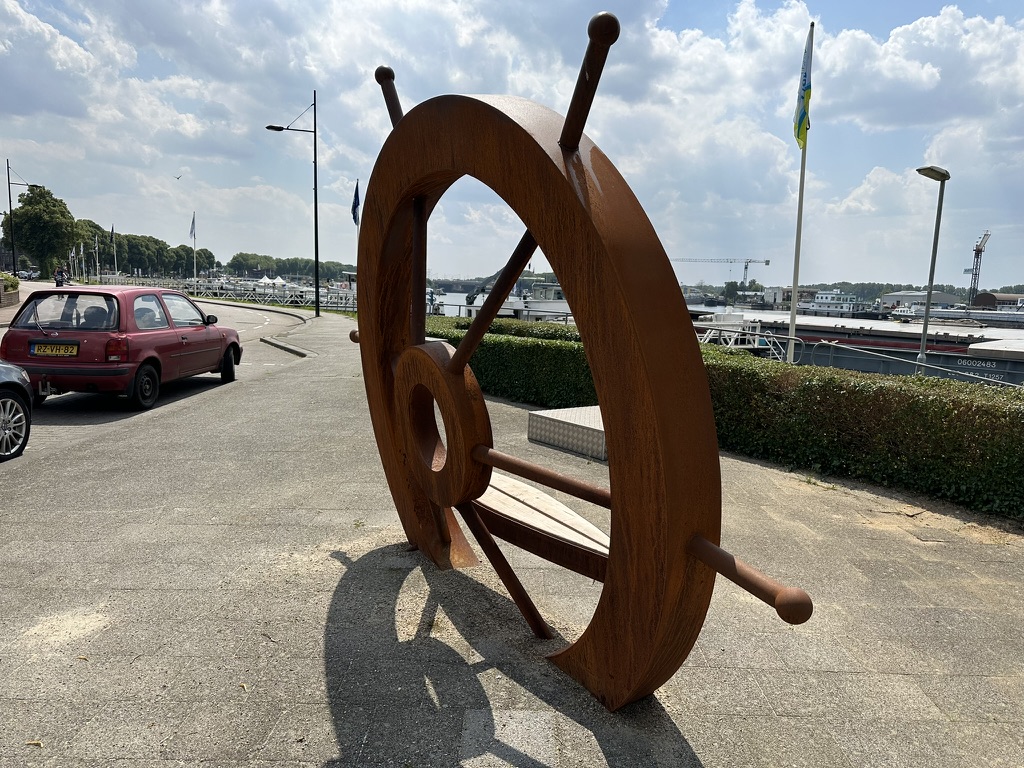
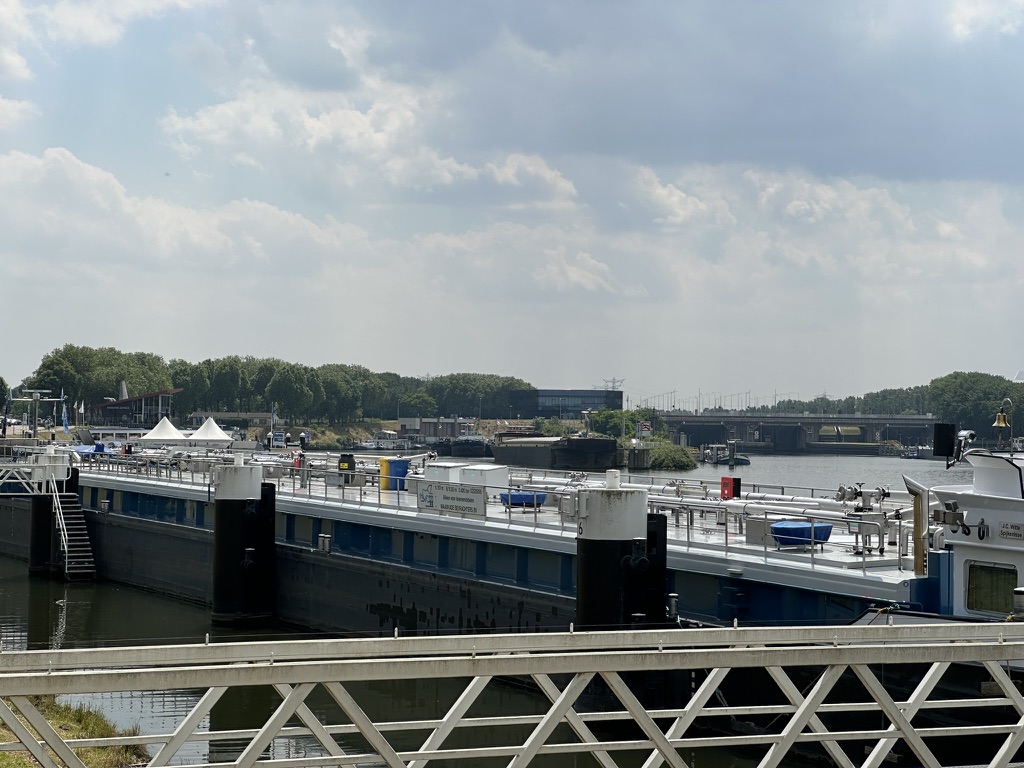
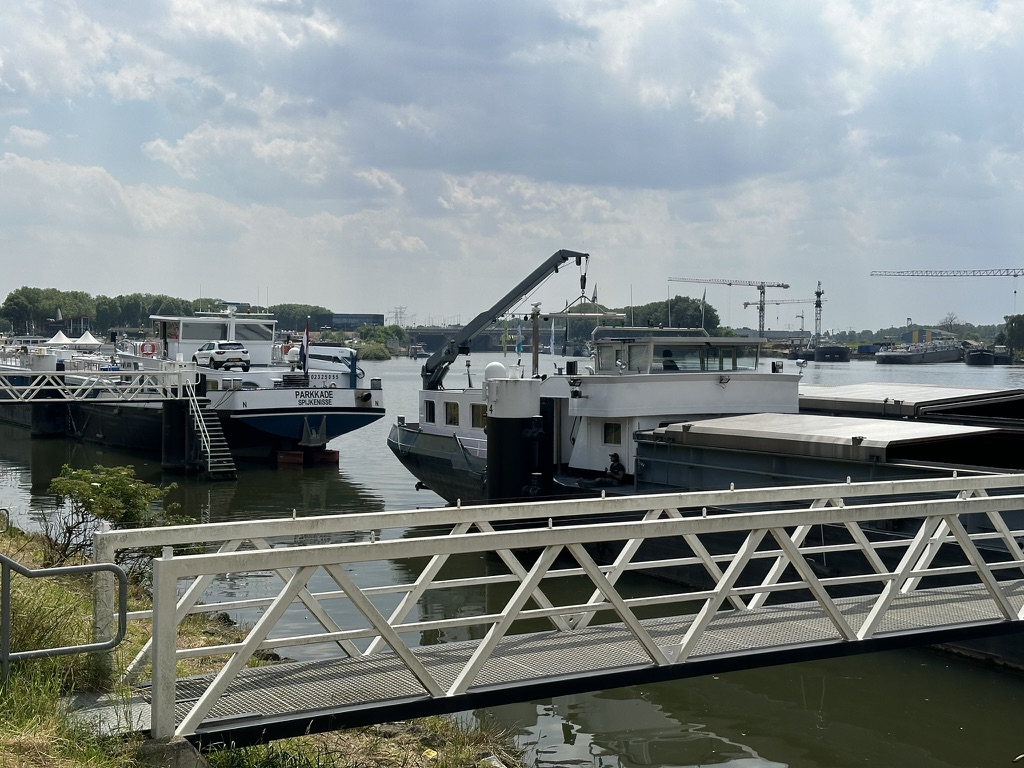
We joined the Dutch Barge Association, the DBA, a few years before we bought Aleau. It was the words of wisdom from members we met at the annual rallies in Europe that helped us decide that this is what we want to do – and taught us what to look for when buying a barge. We are always pleased to bump into fellow members – which seems to happen wherever we go. Here in Maasbracht, Anahita is moored in the marina, La Belle Hèlène has joined Esme and Aleau at Tinnemans. Four sets of DBA members together in one town in the Netherlands. I think this calls for a bottle of Crémant.

